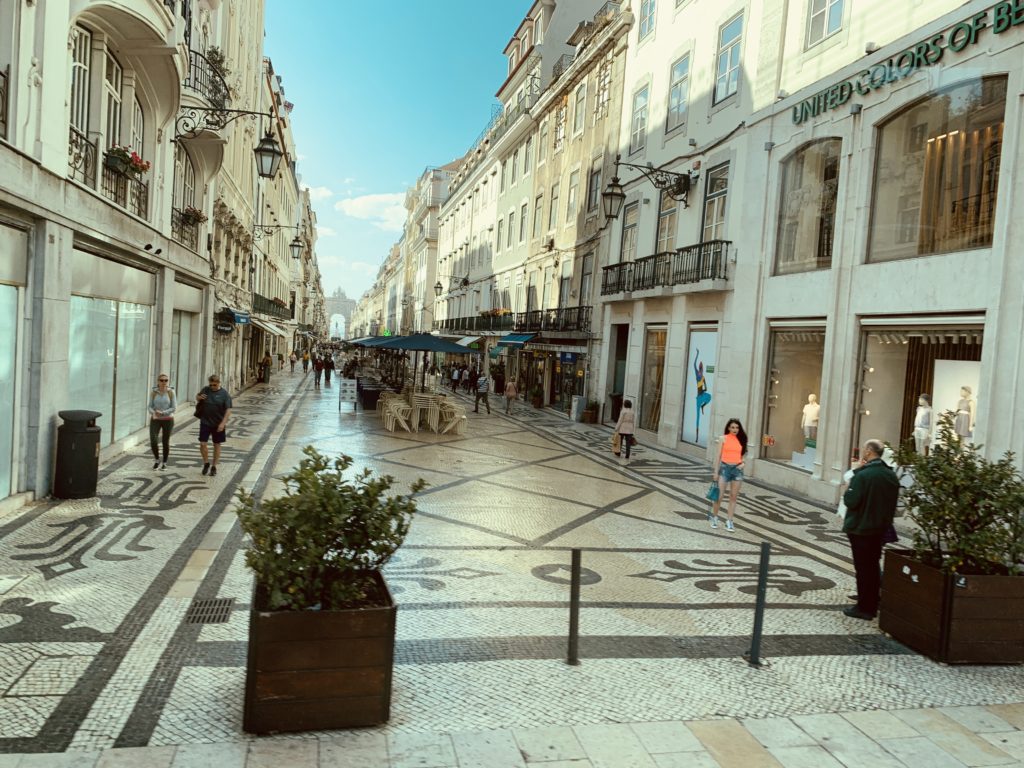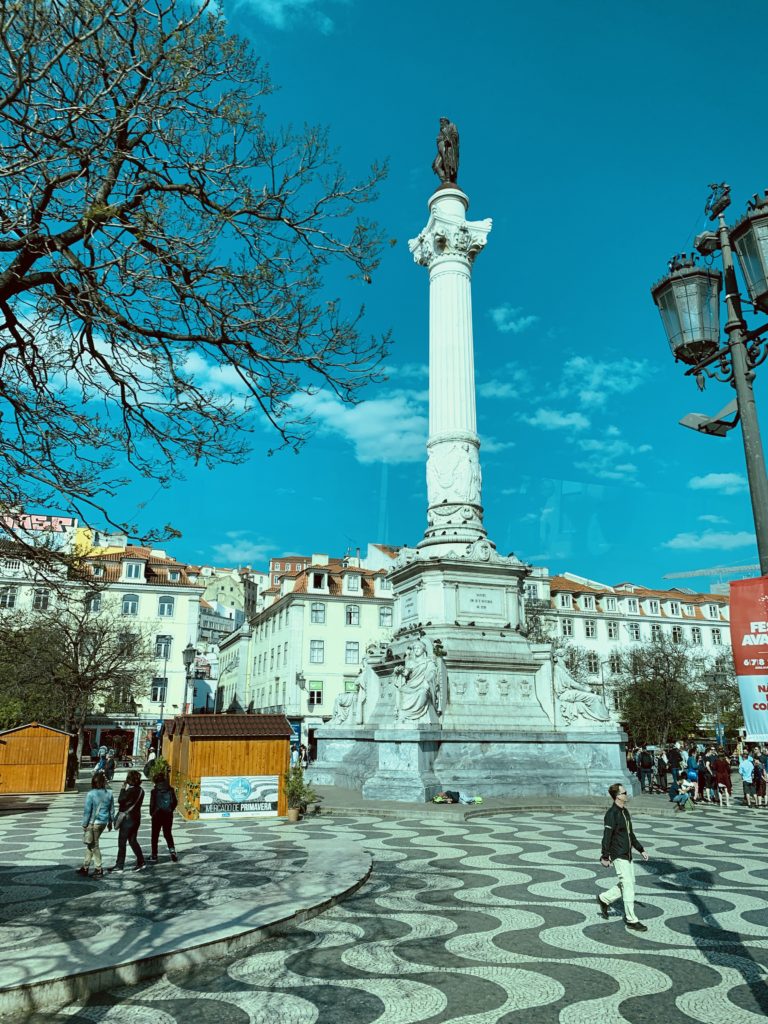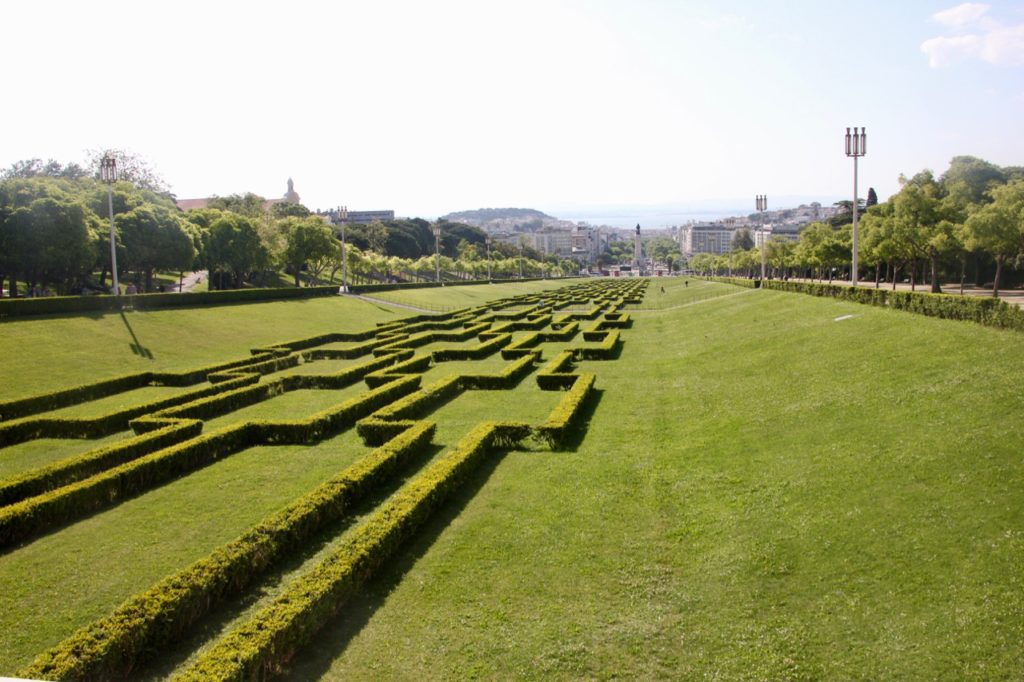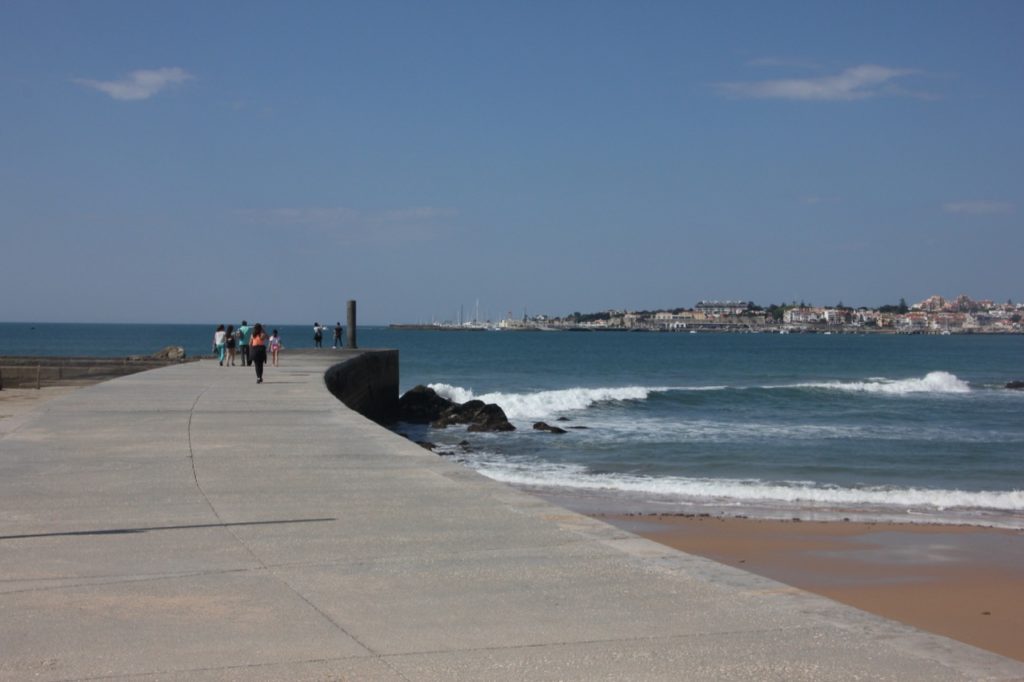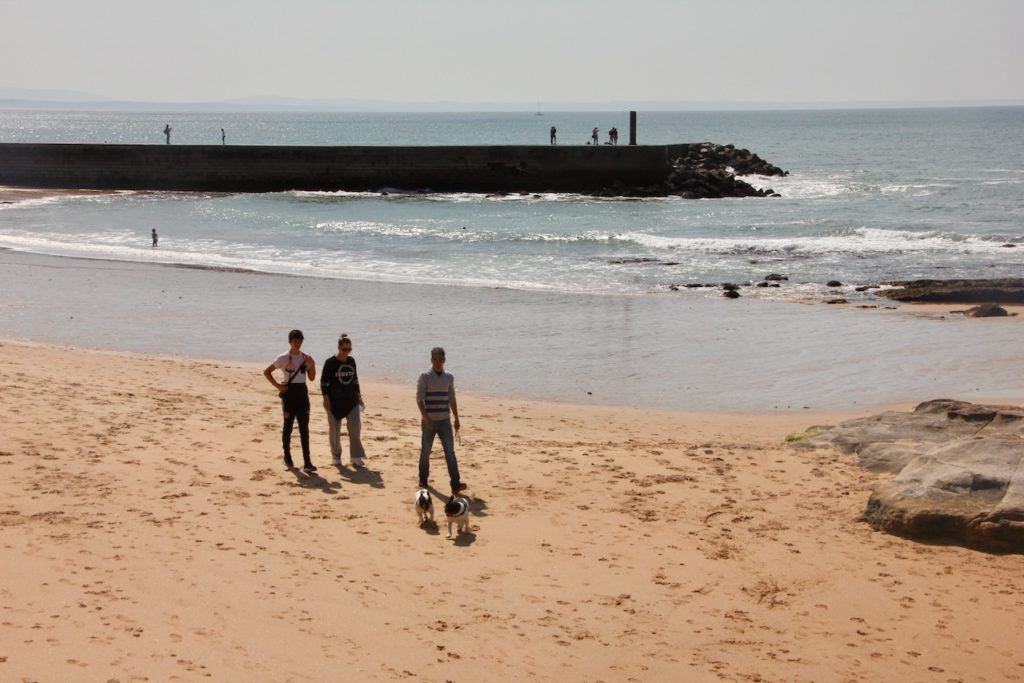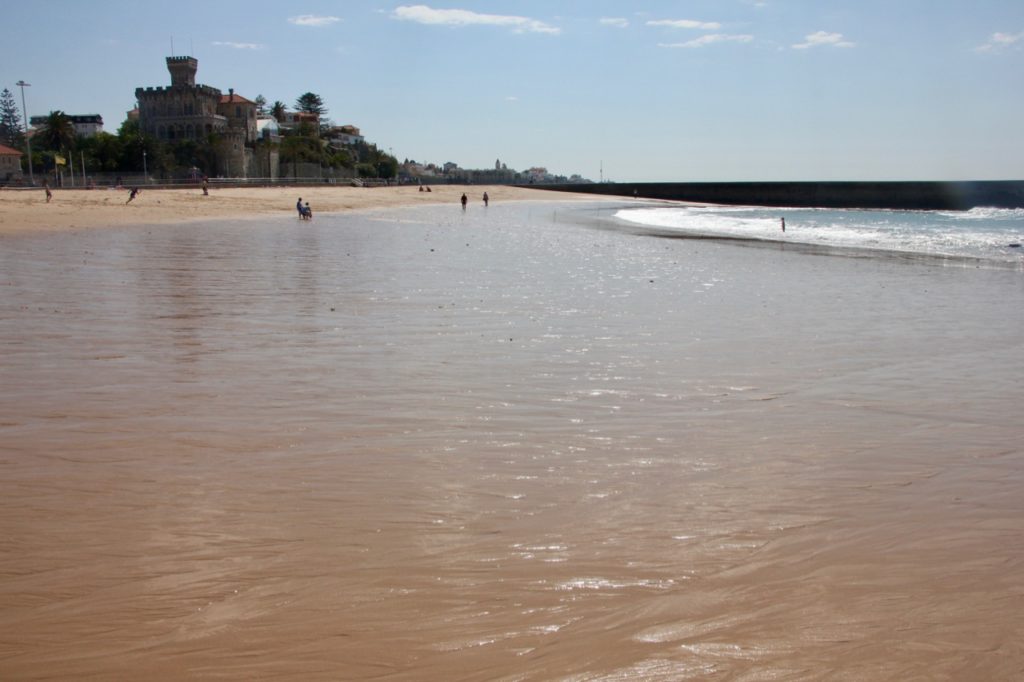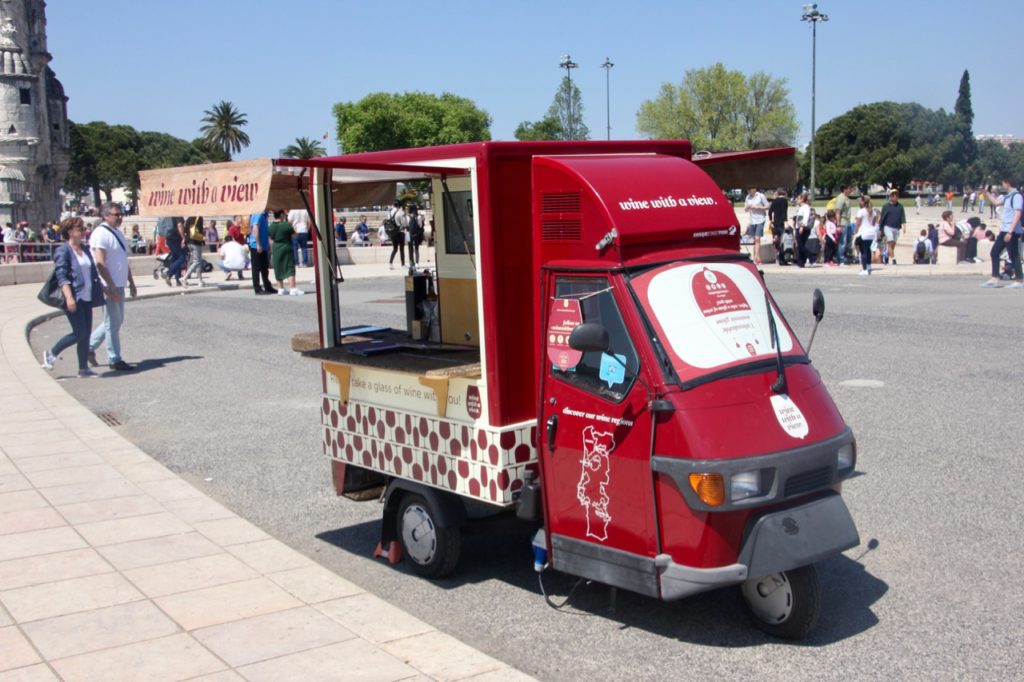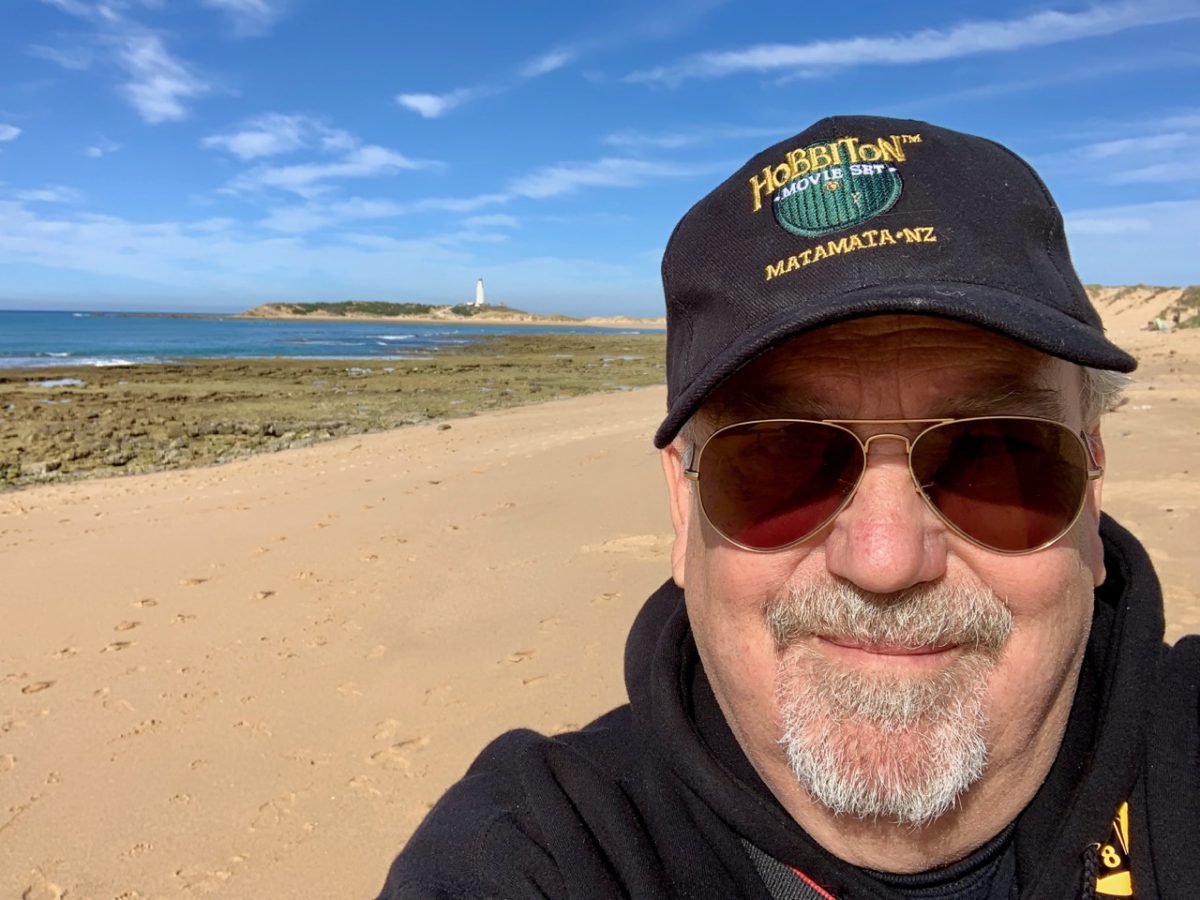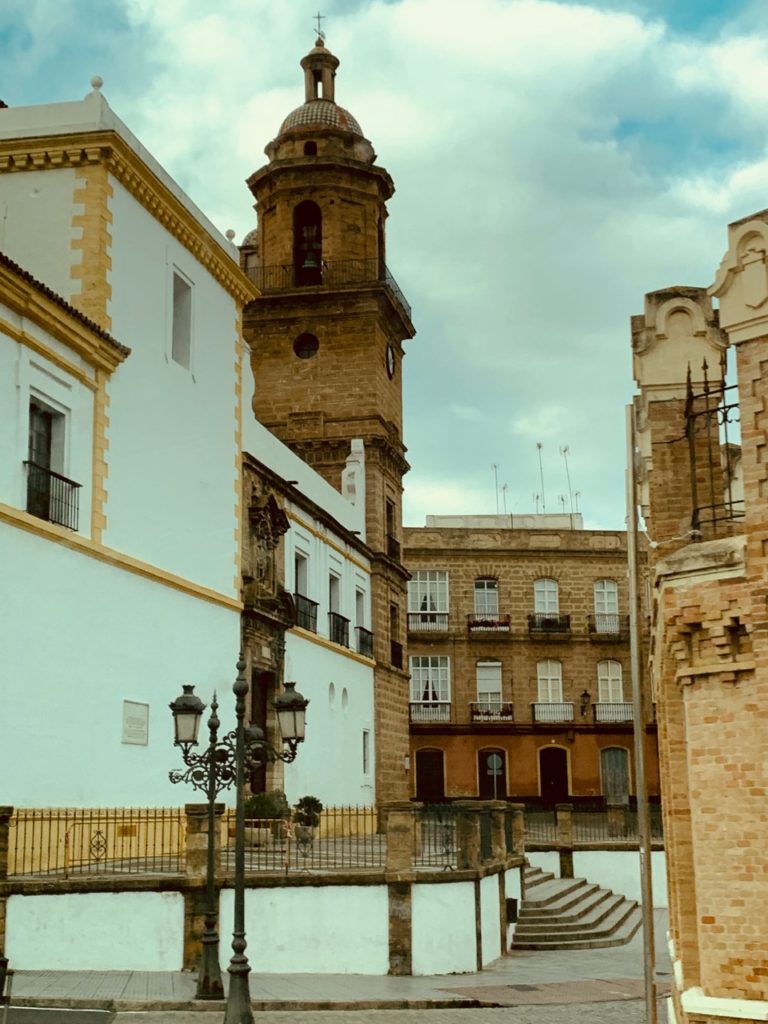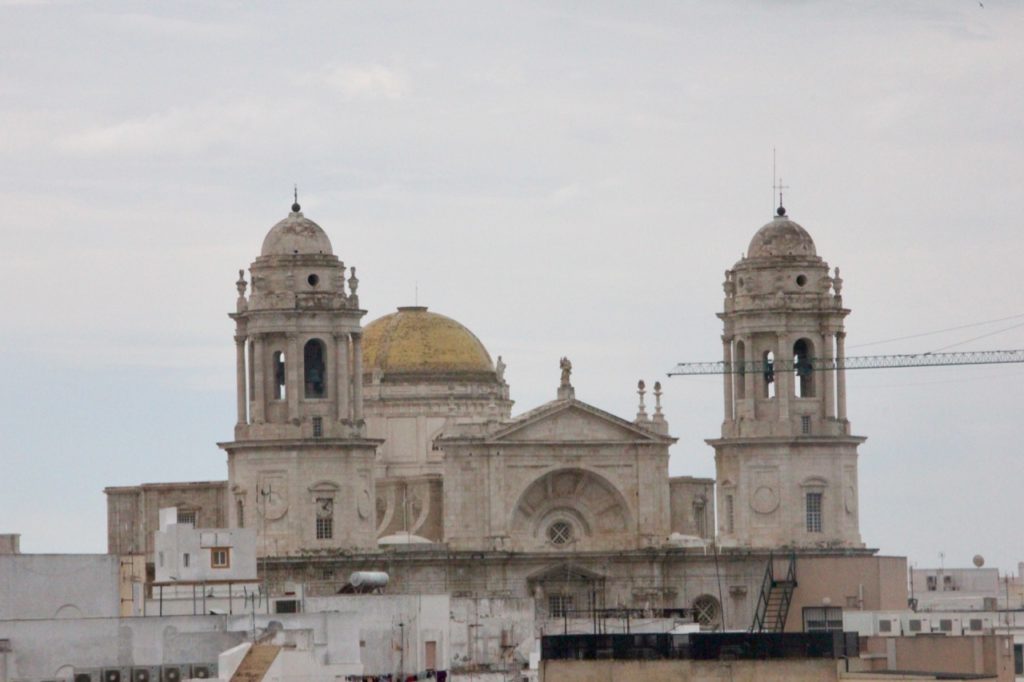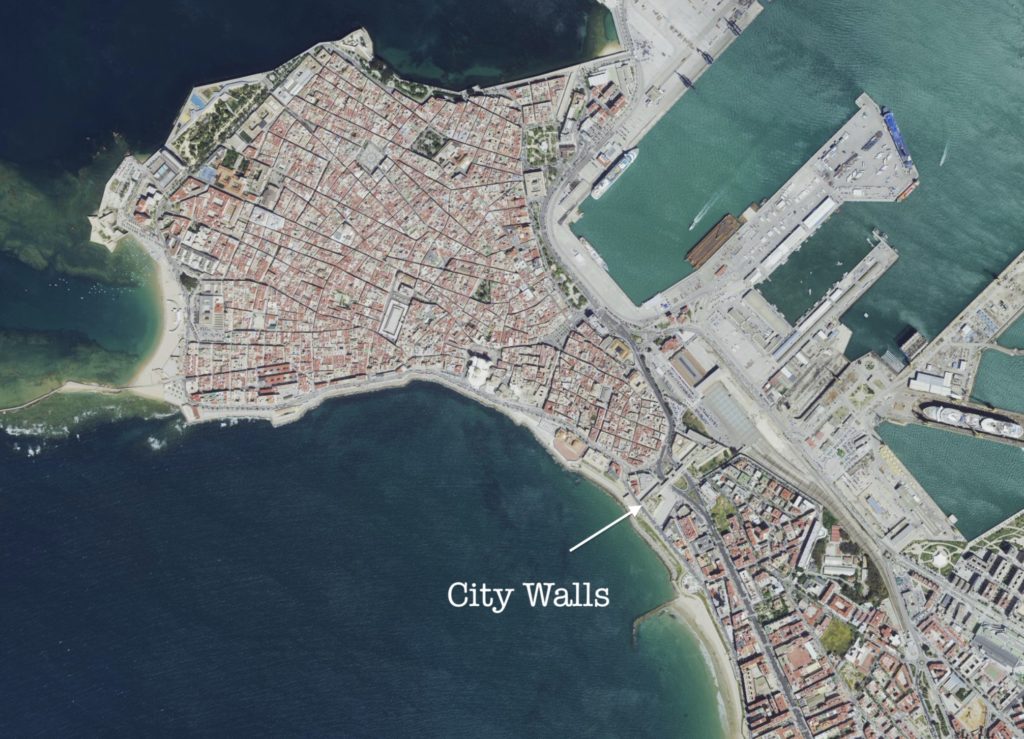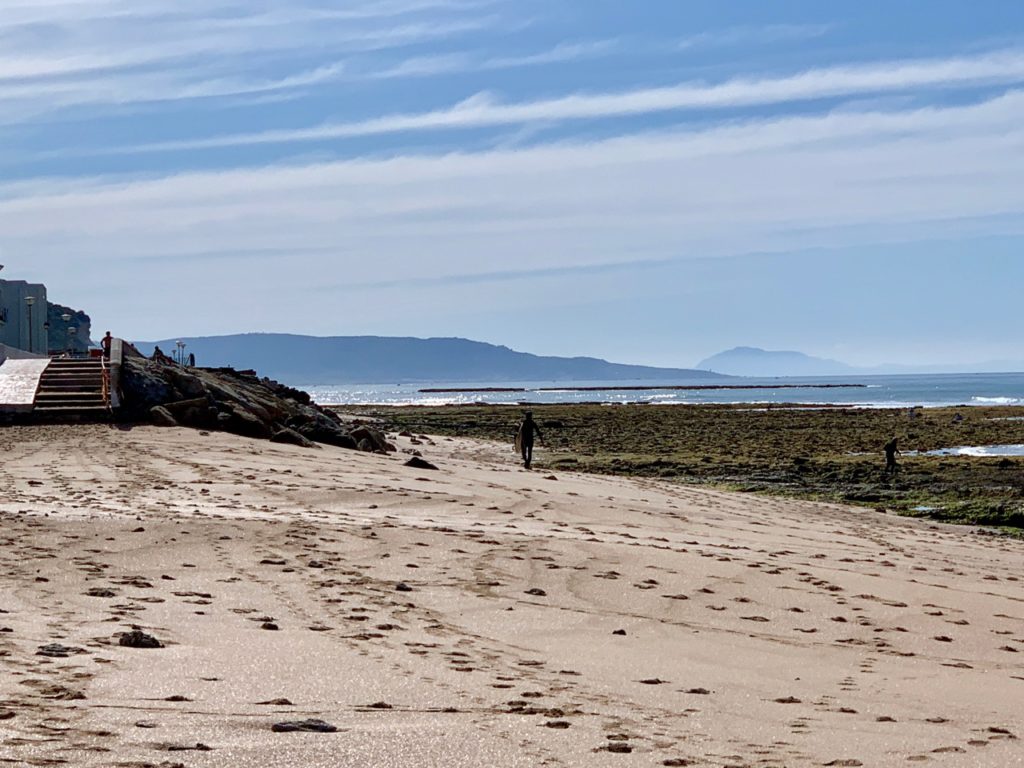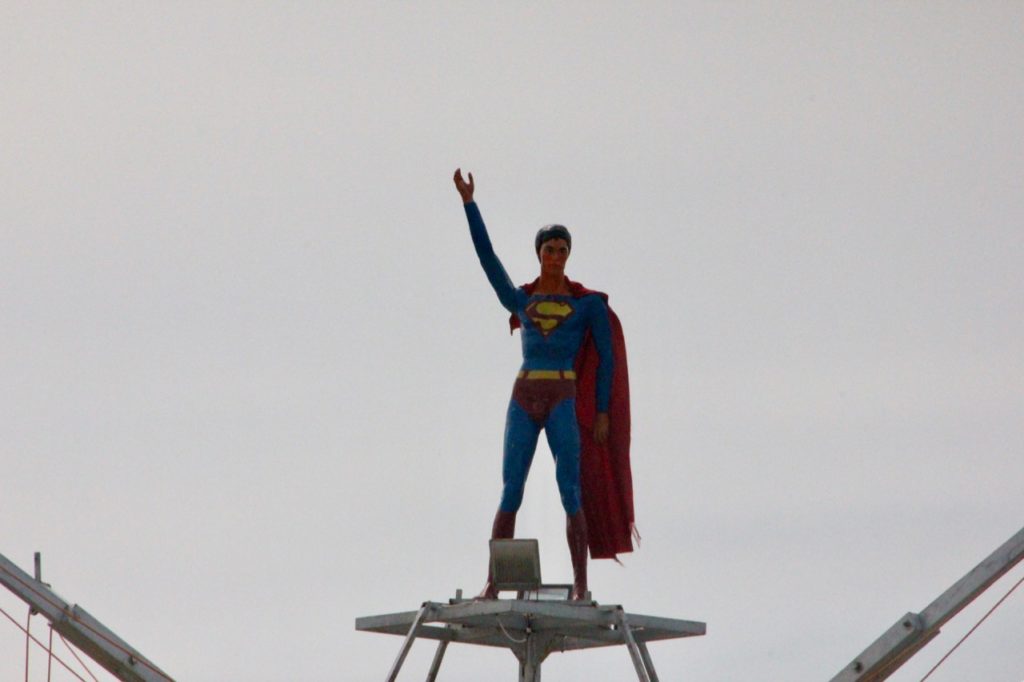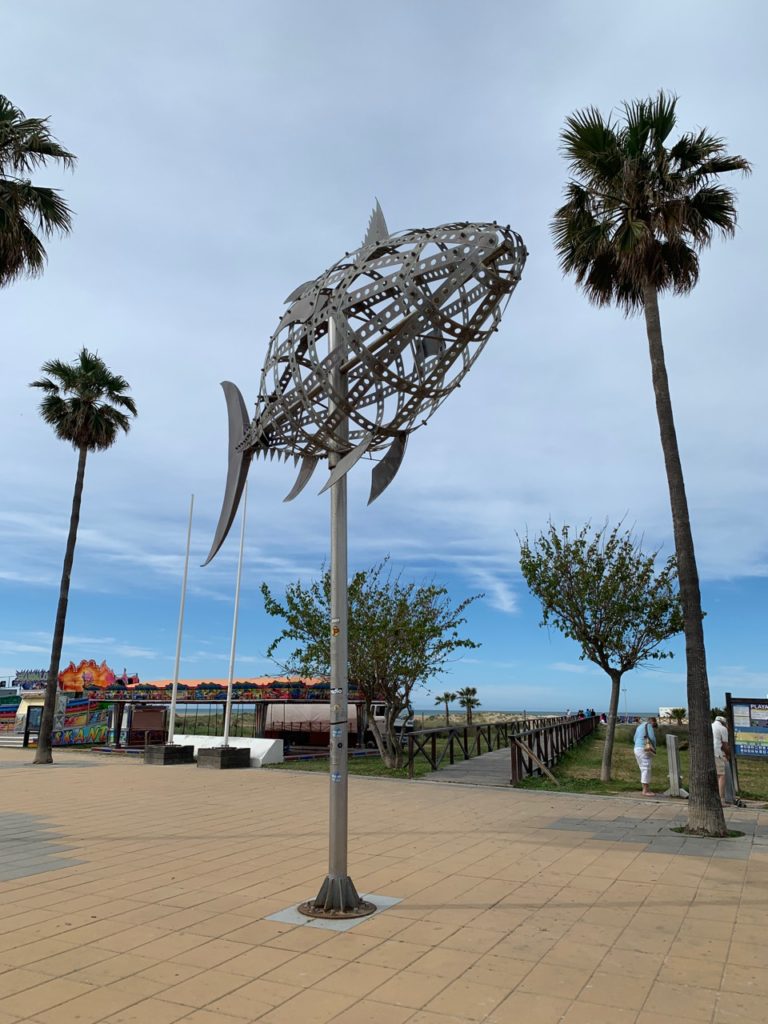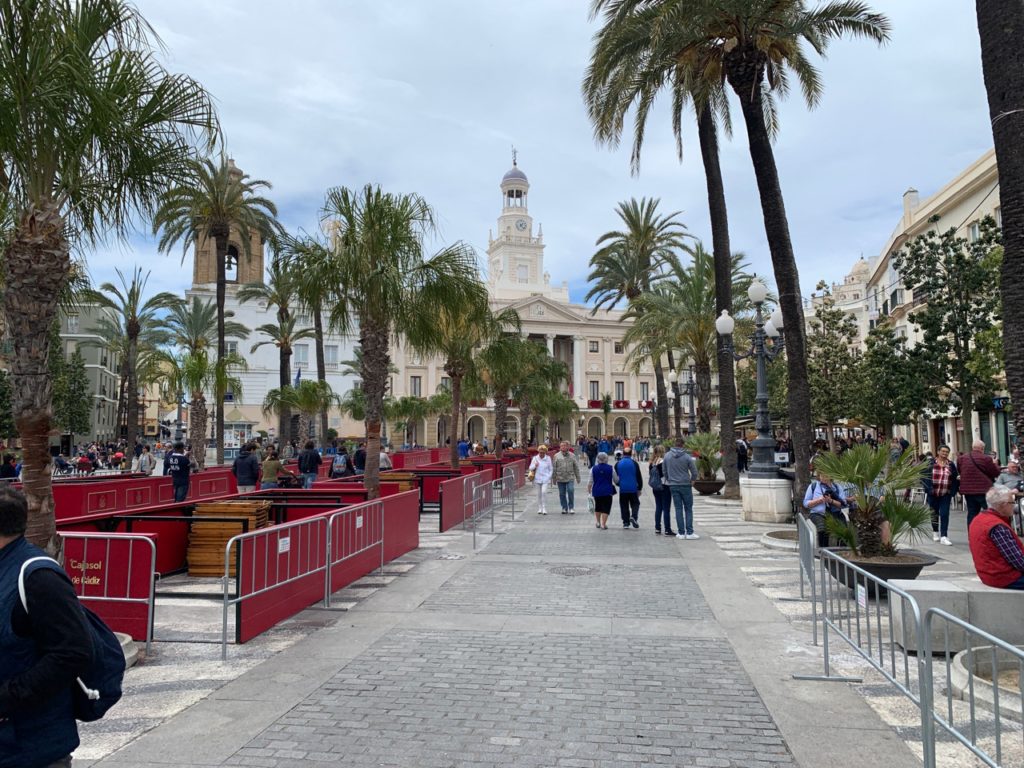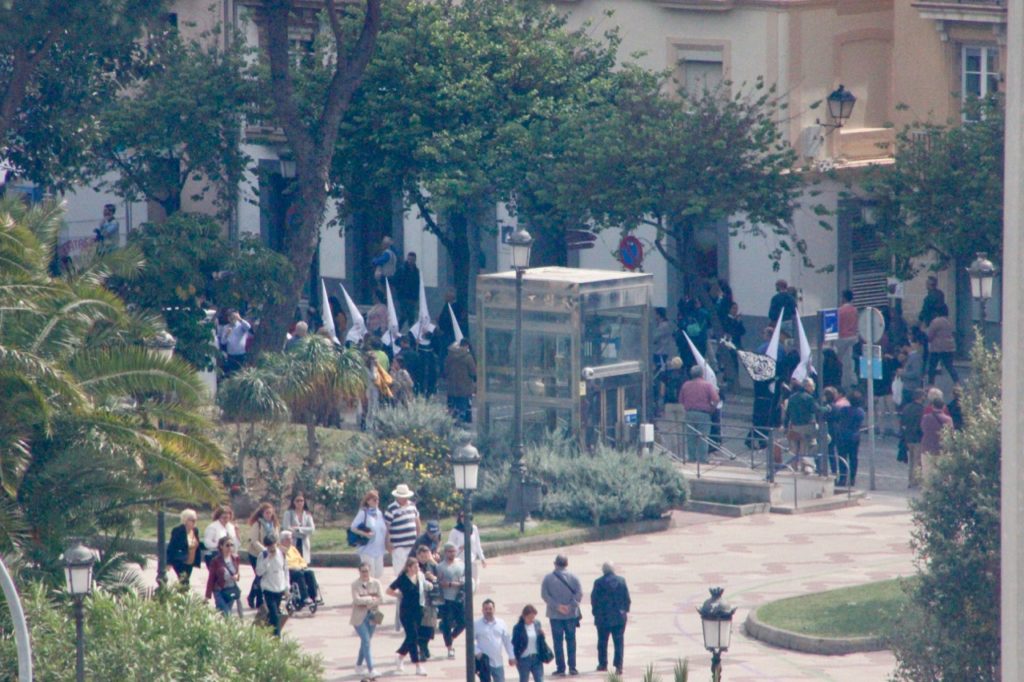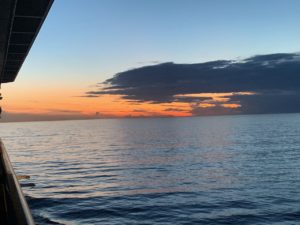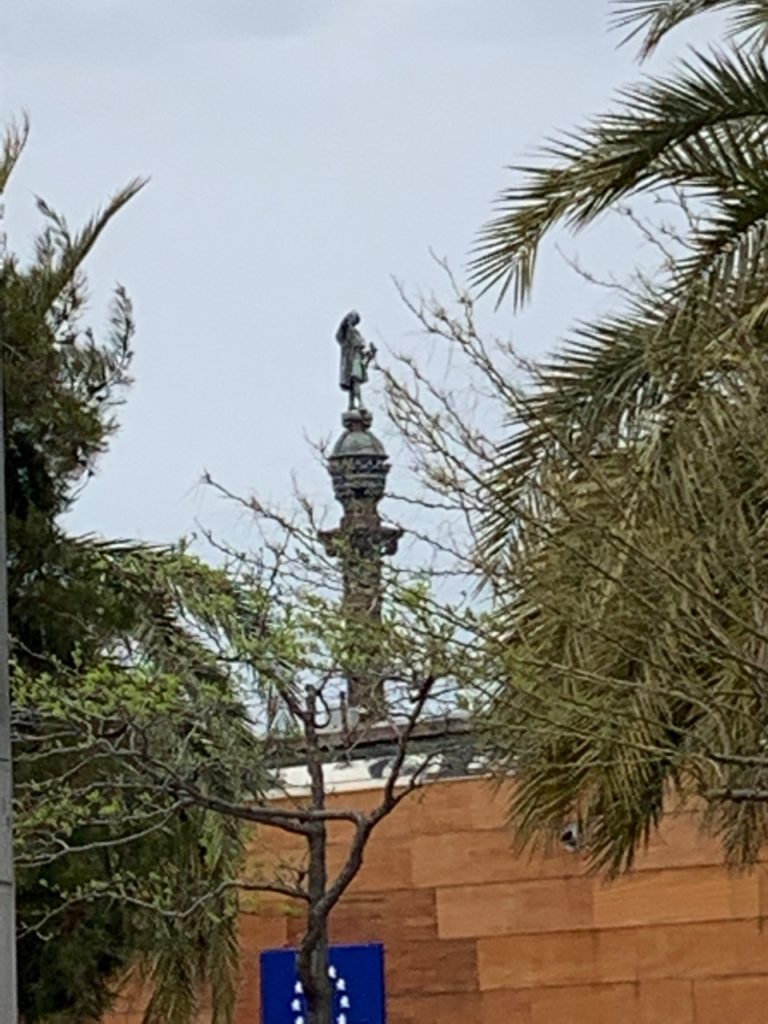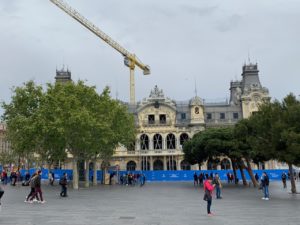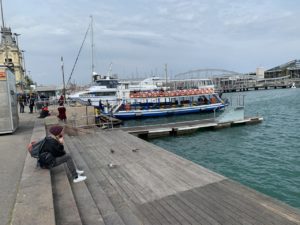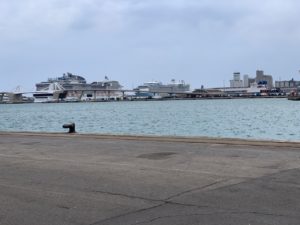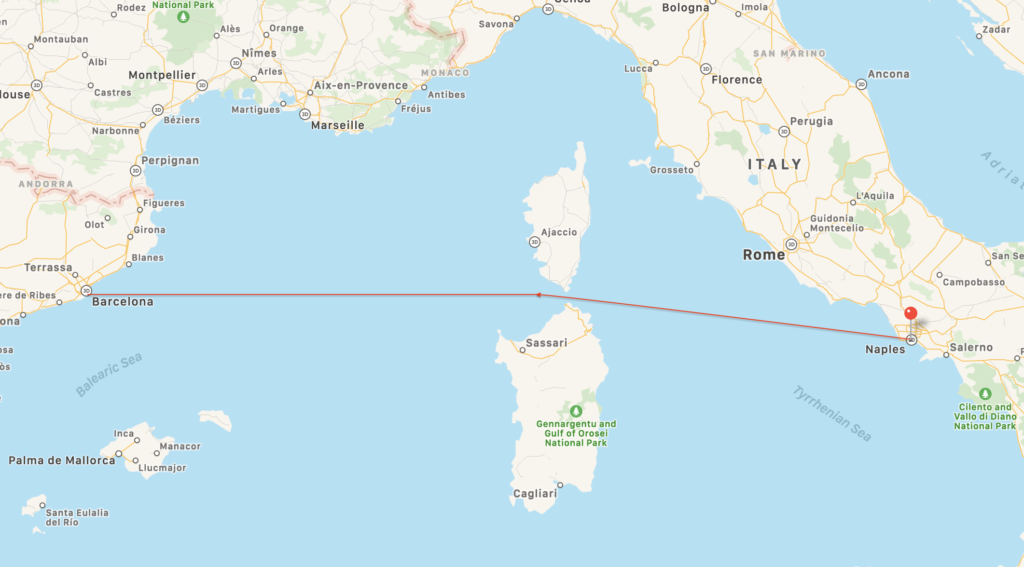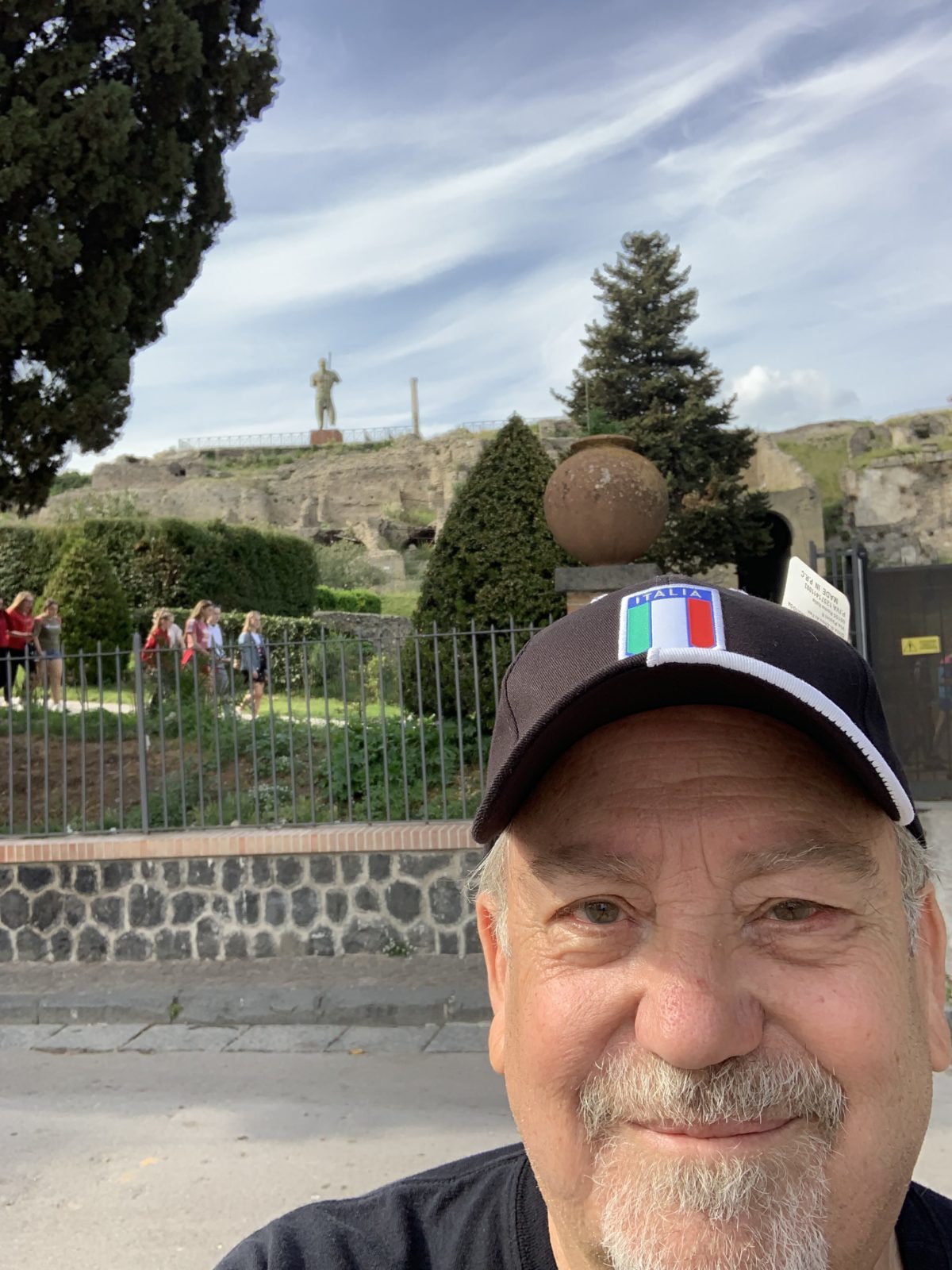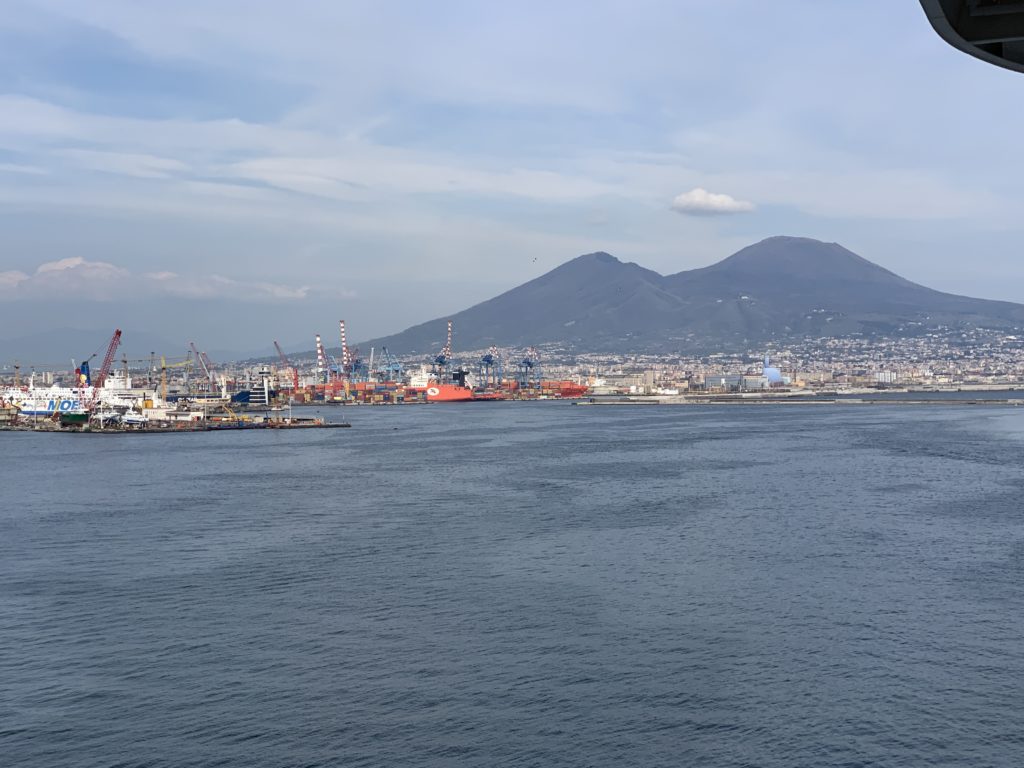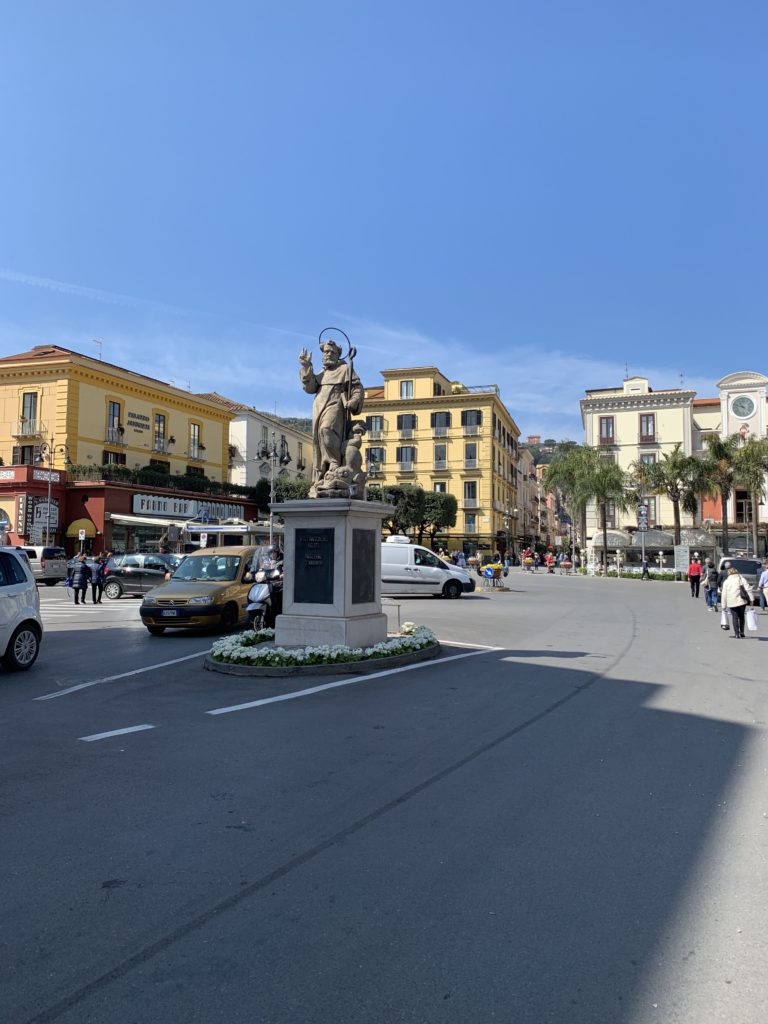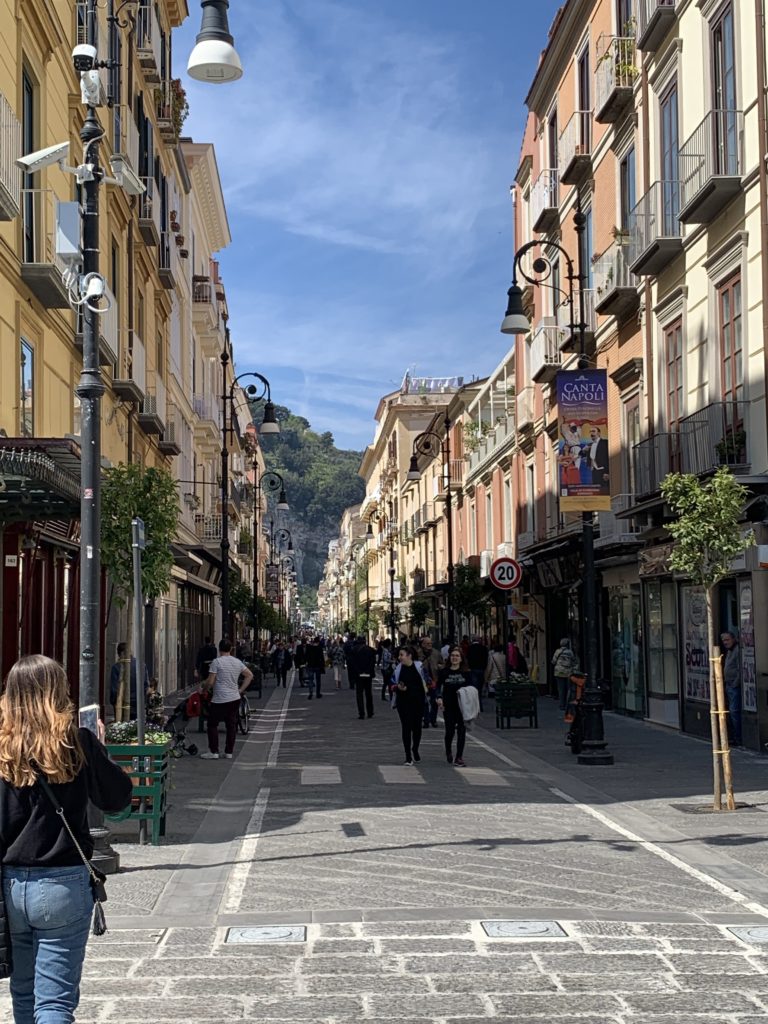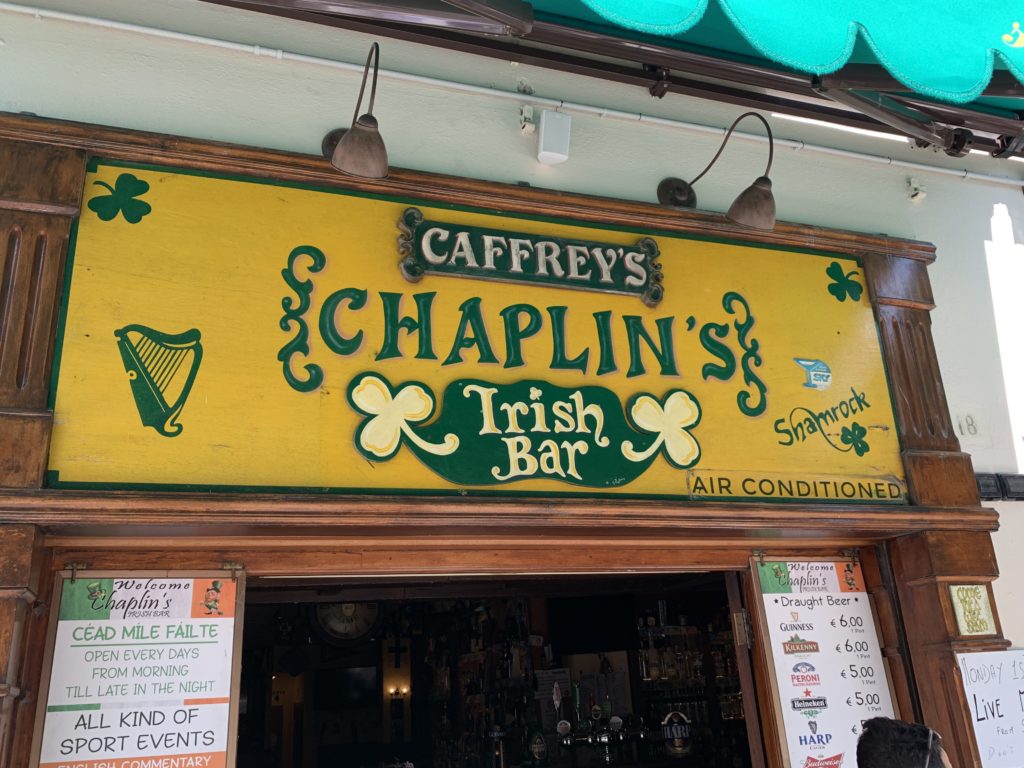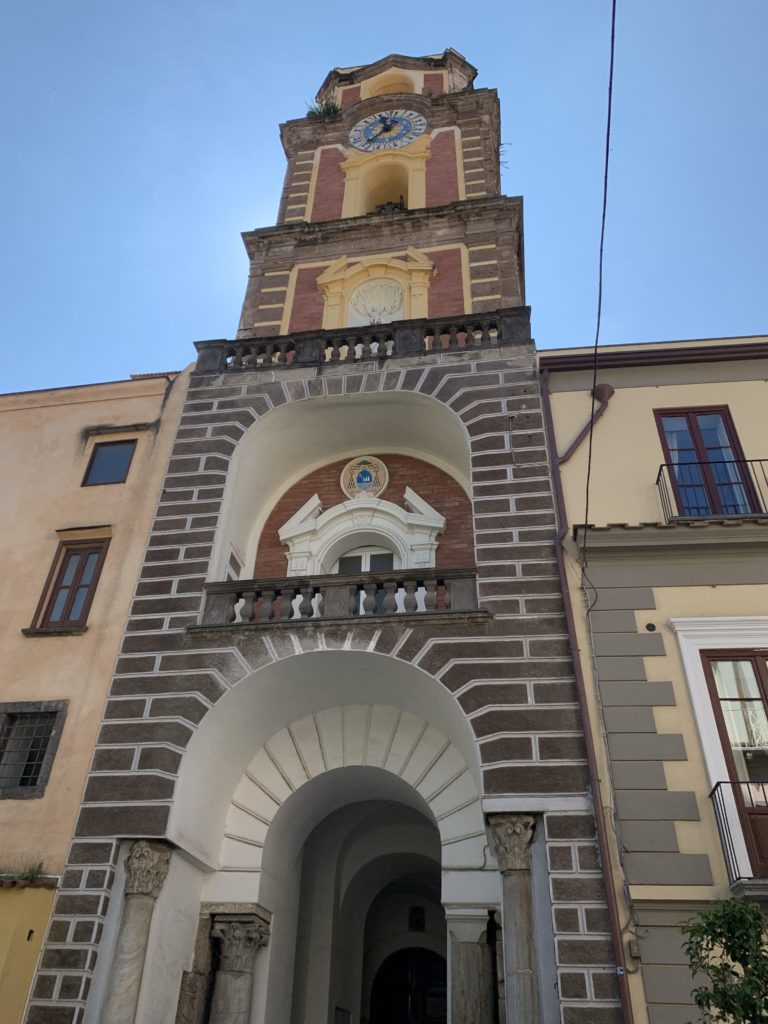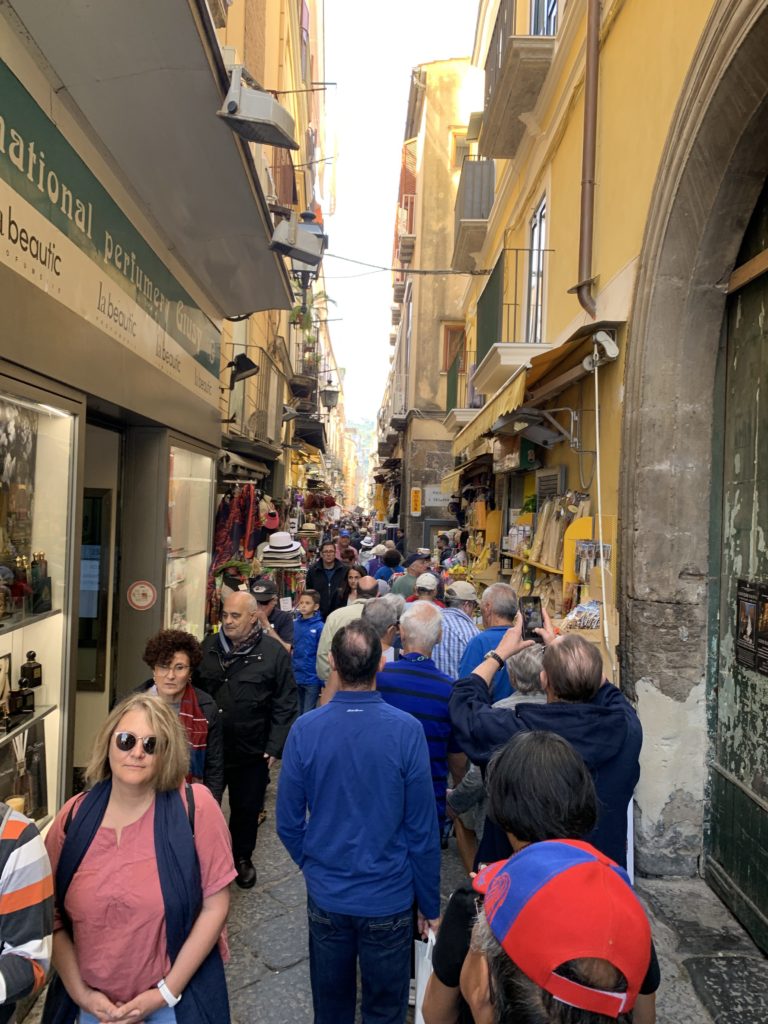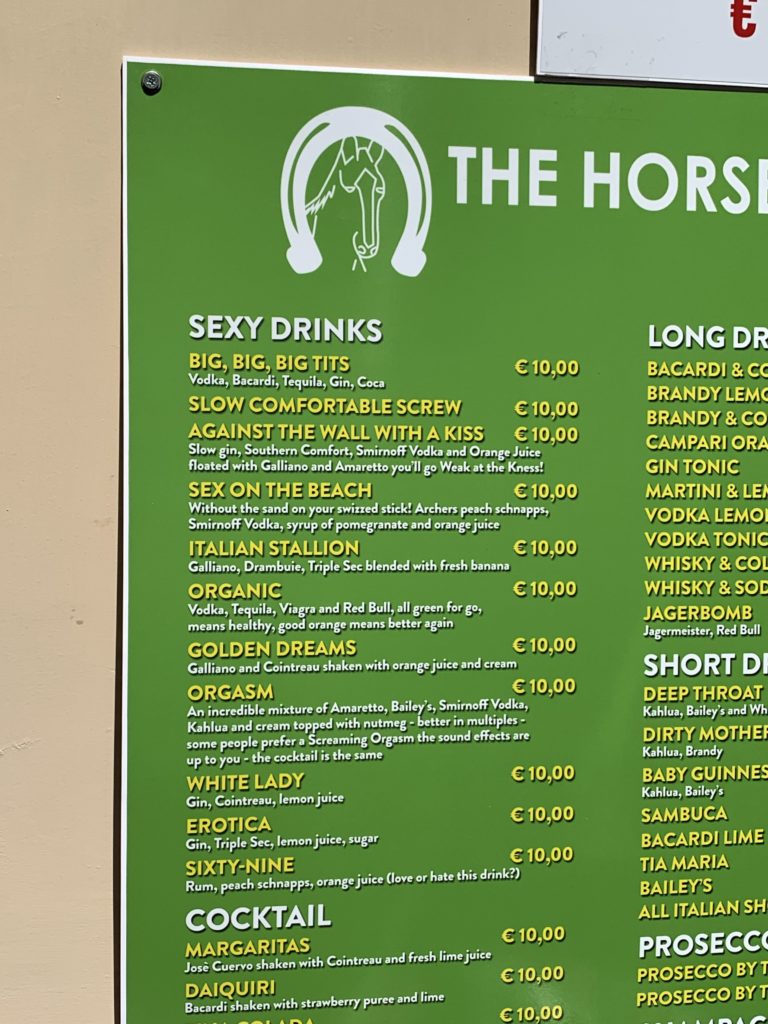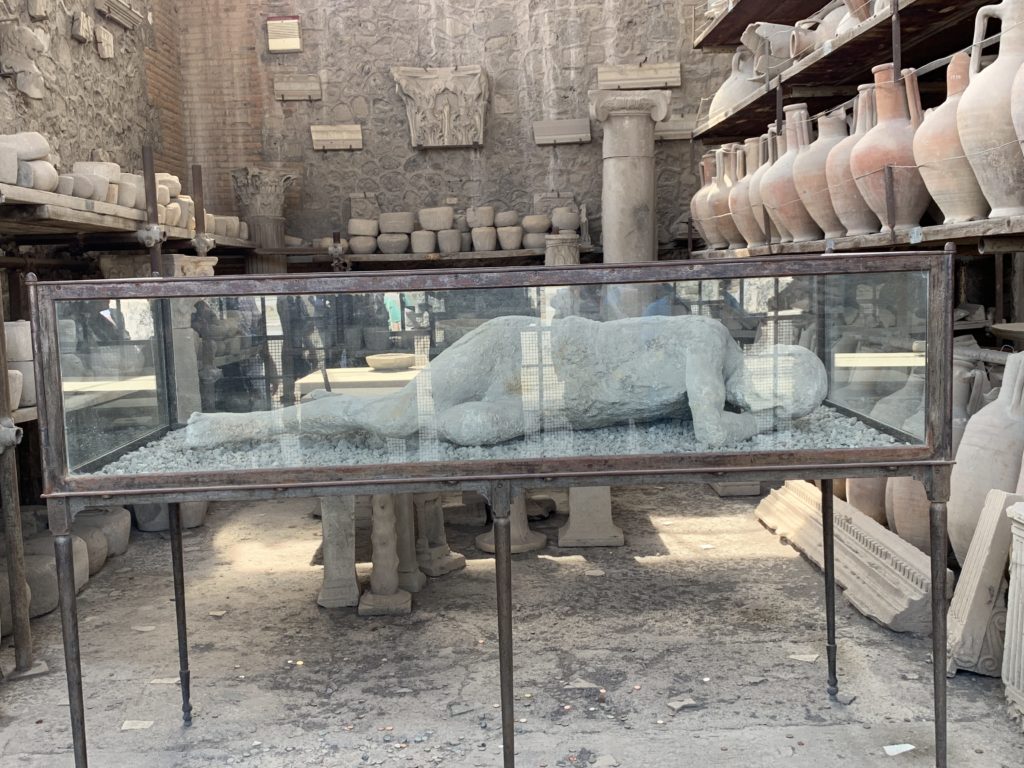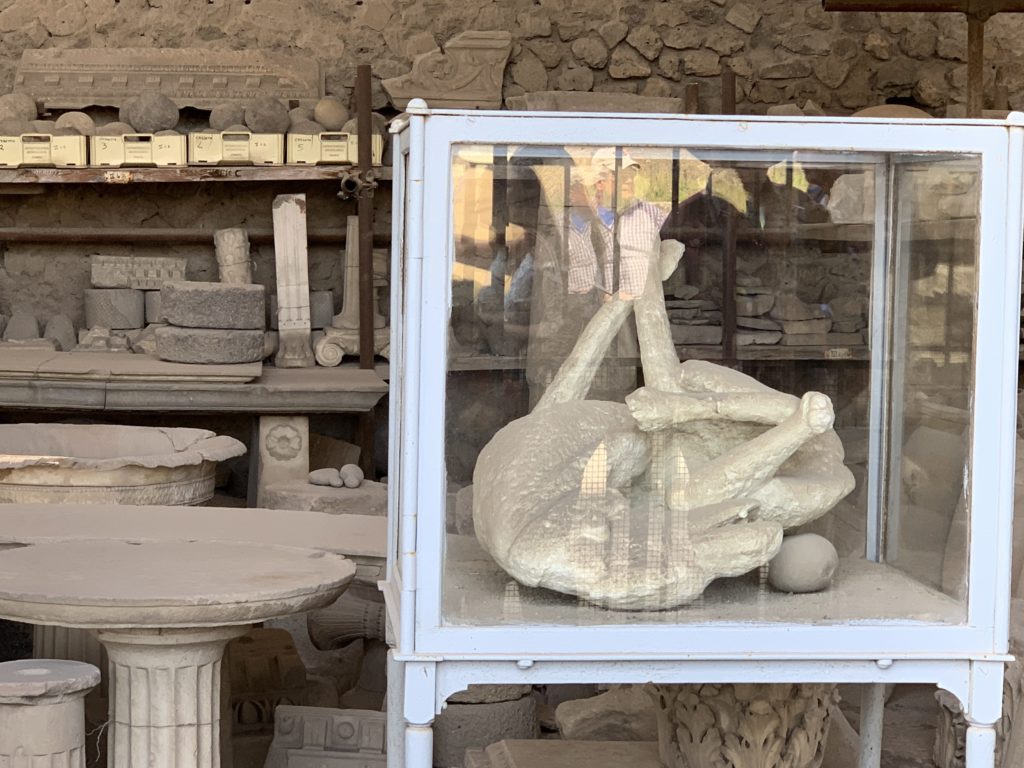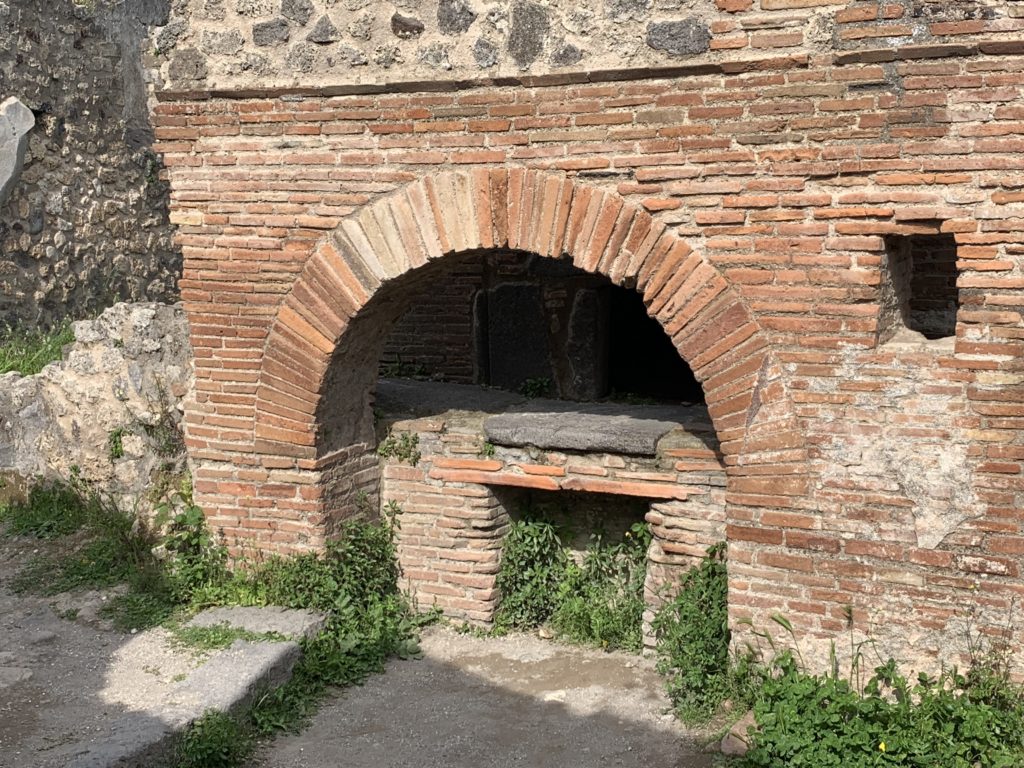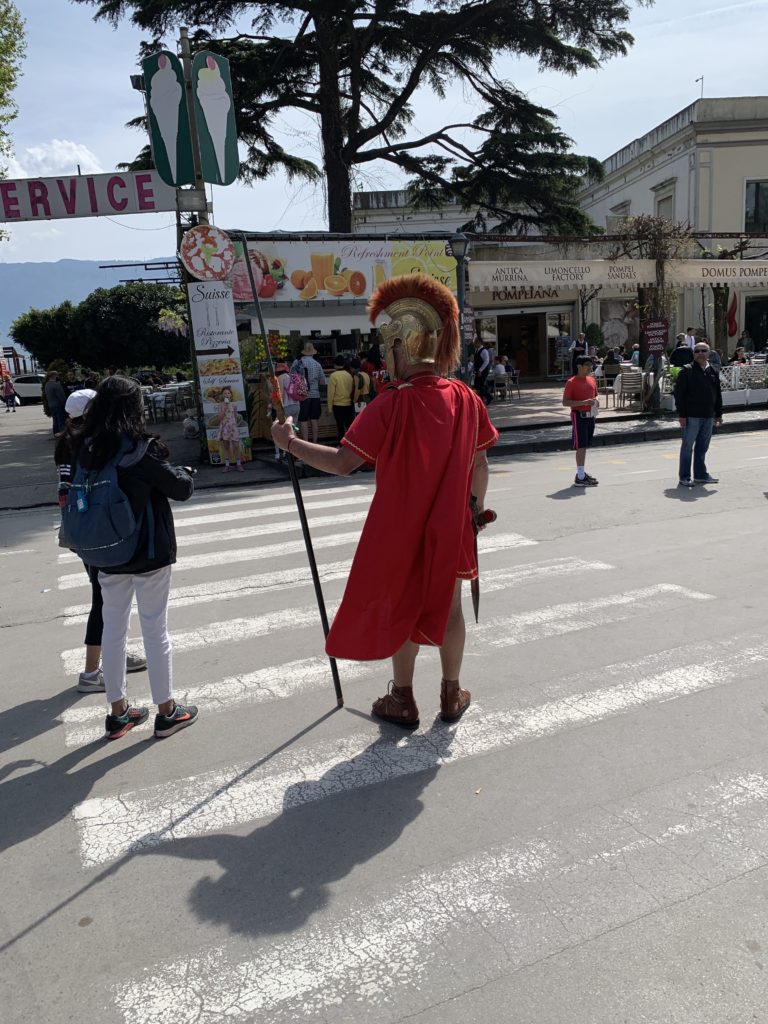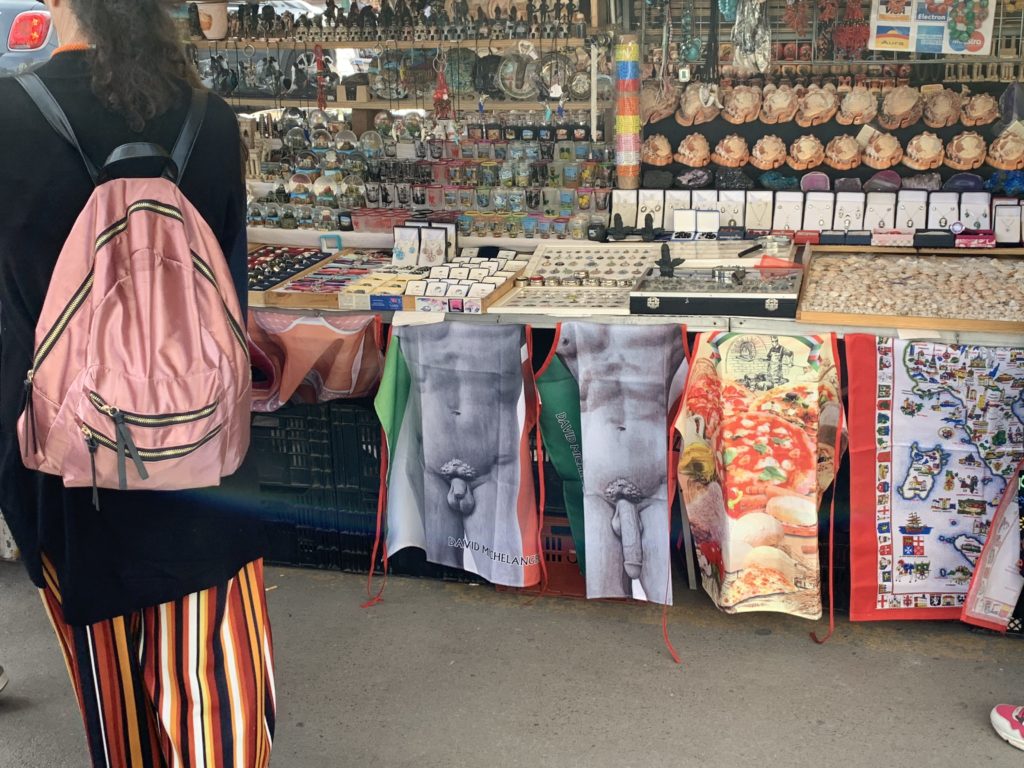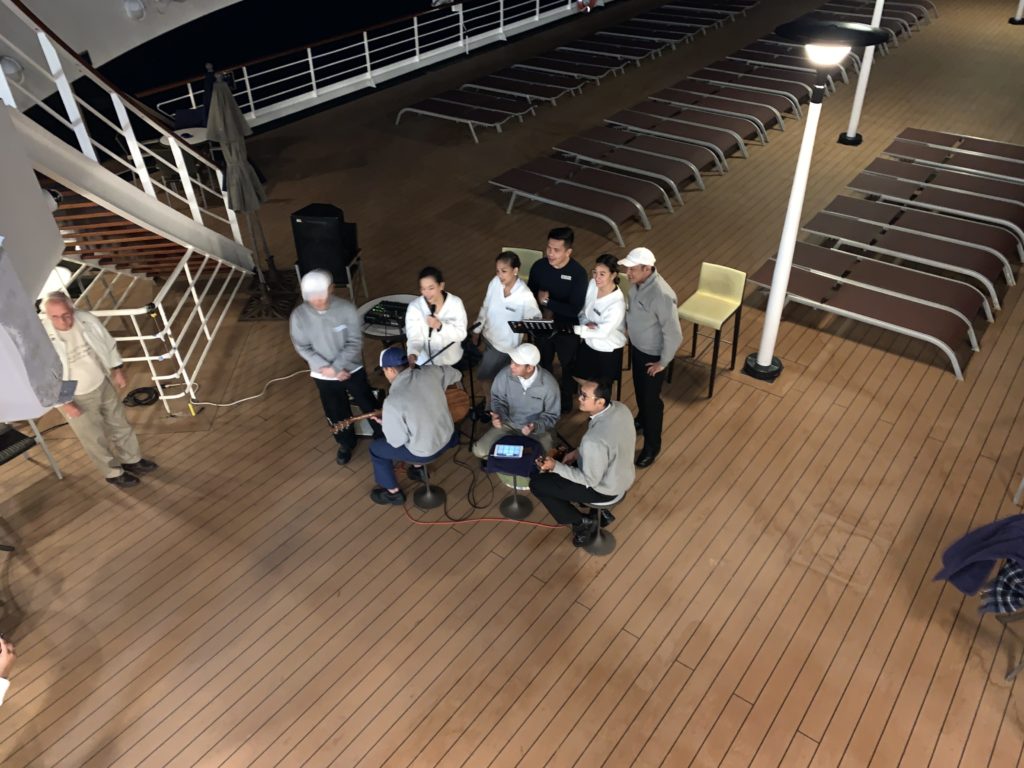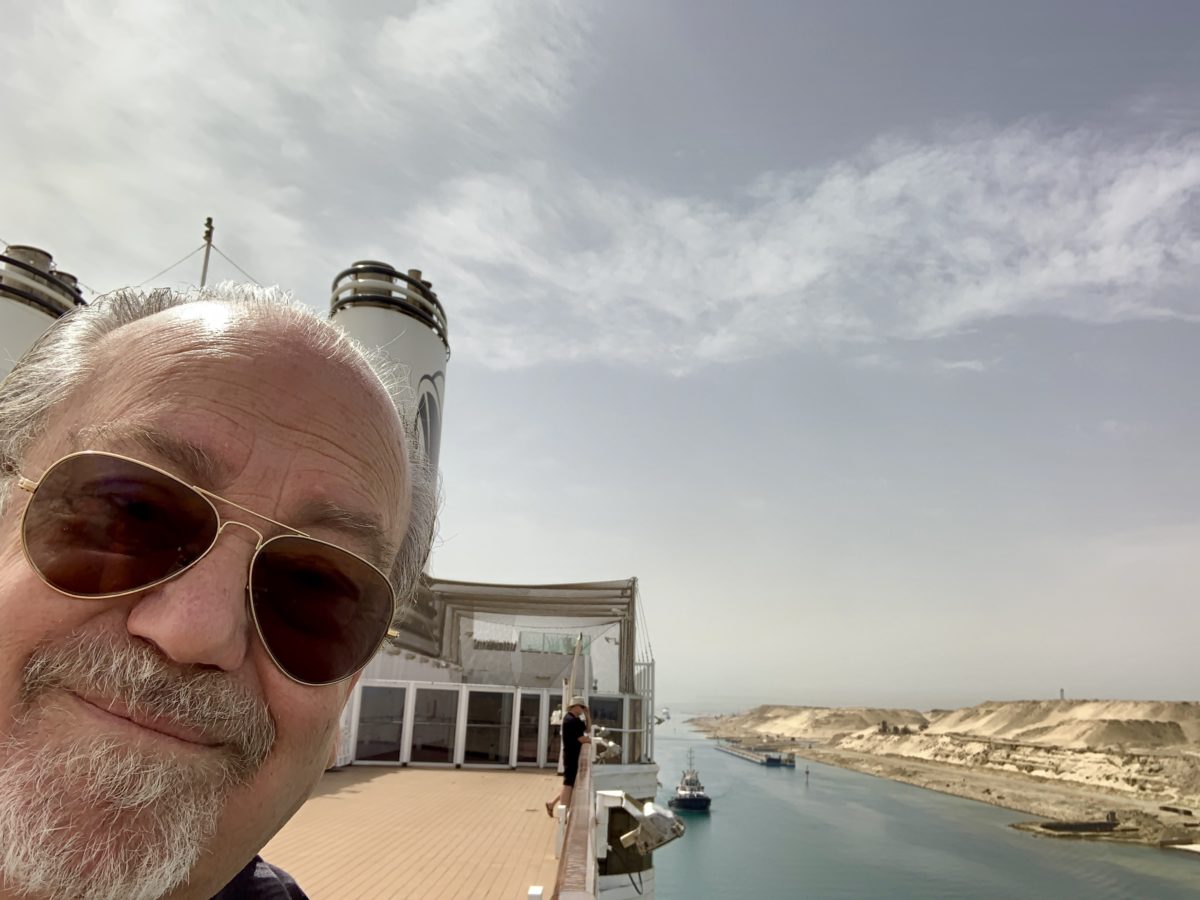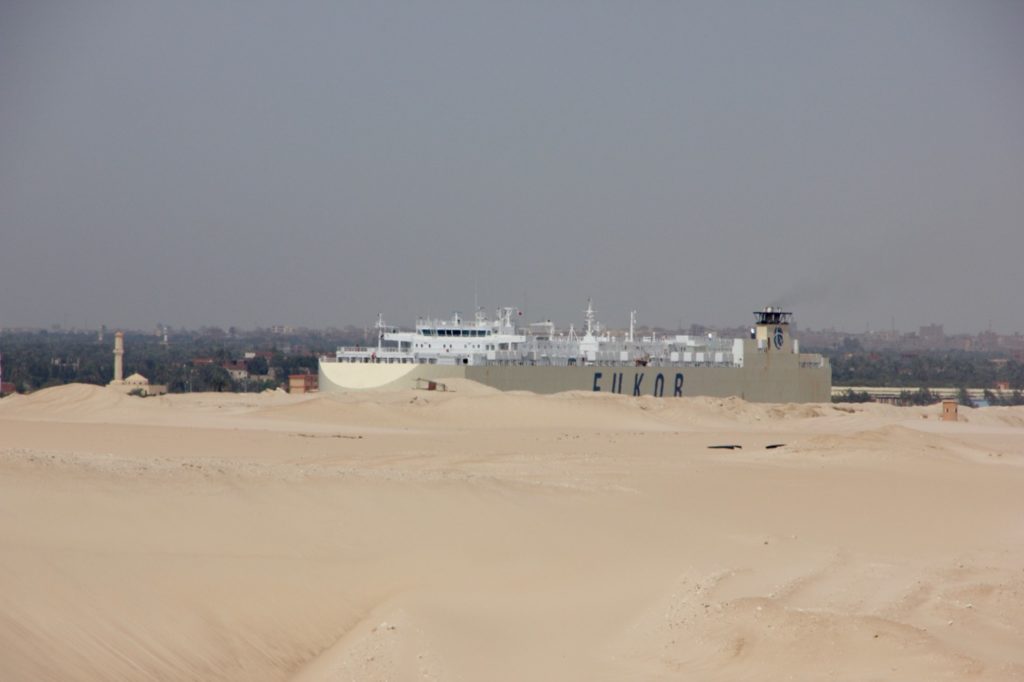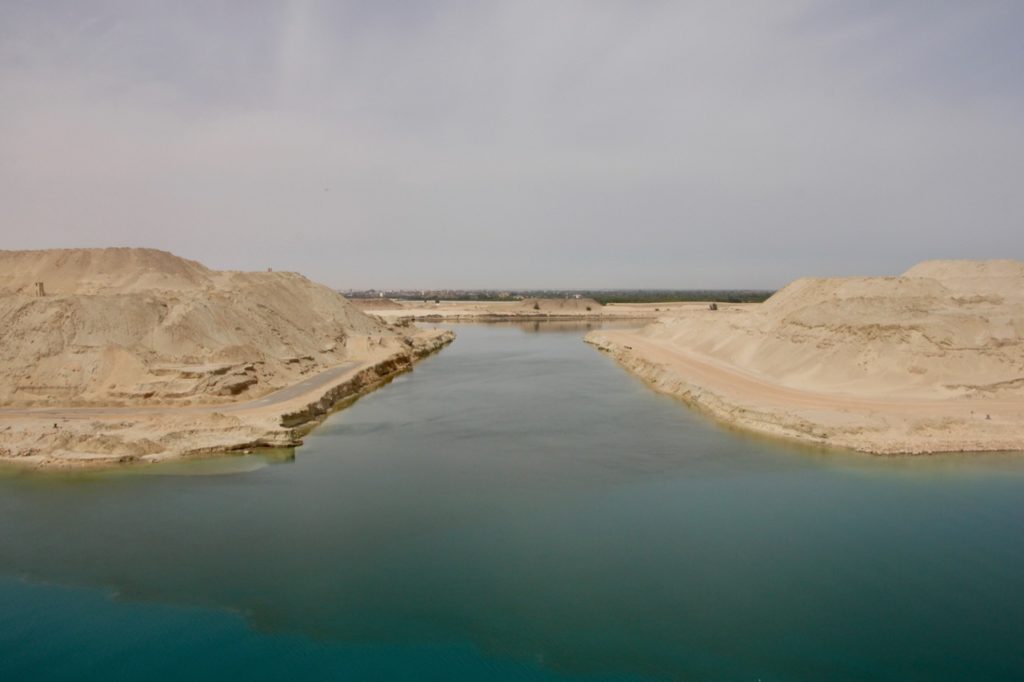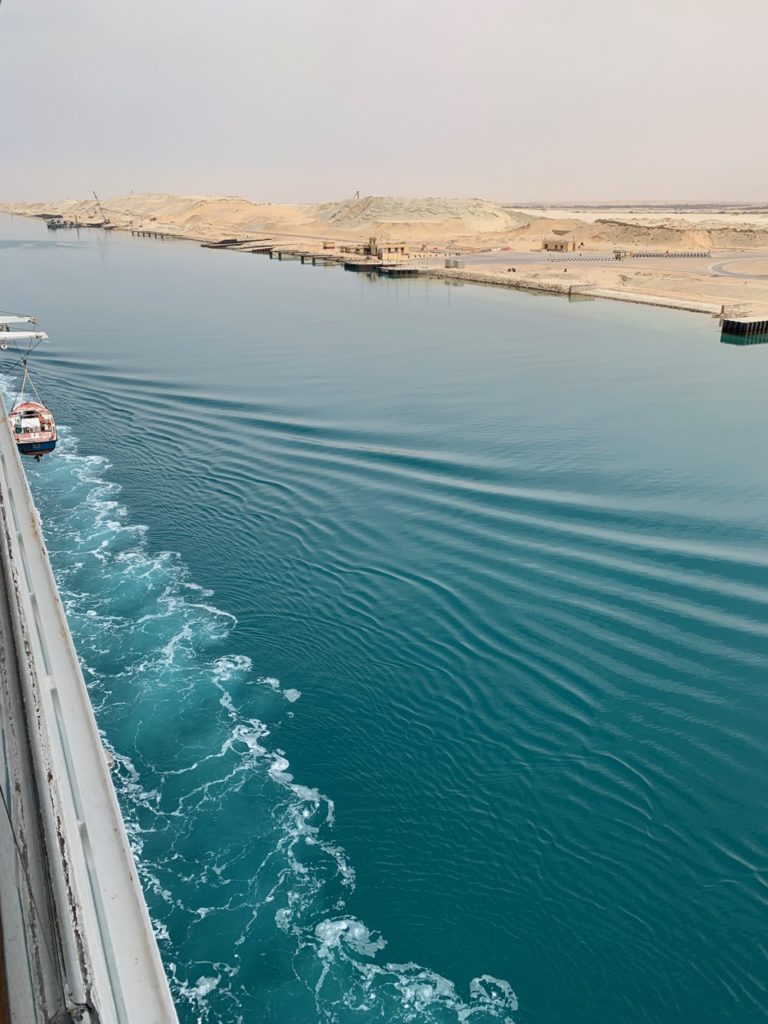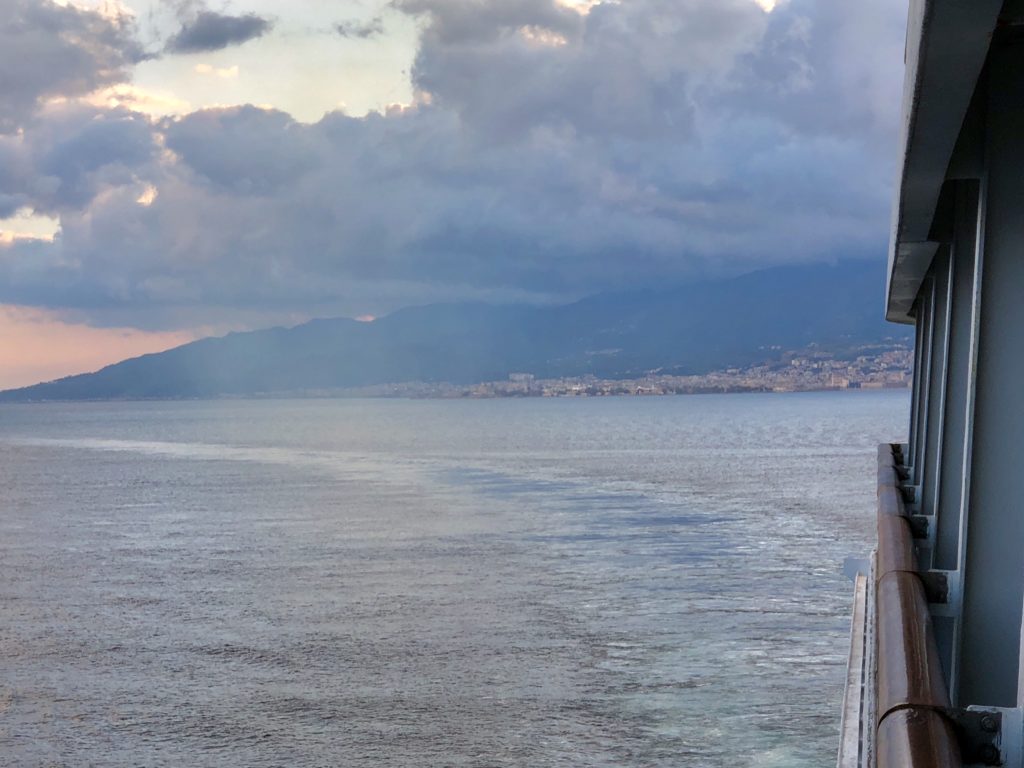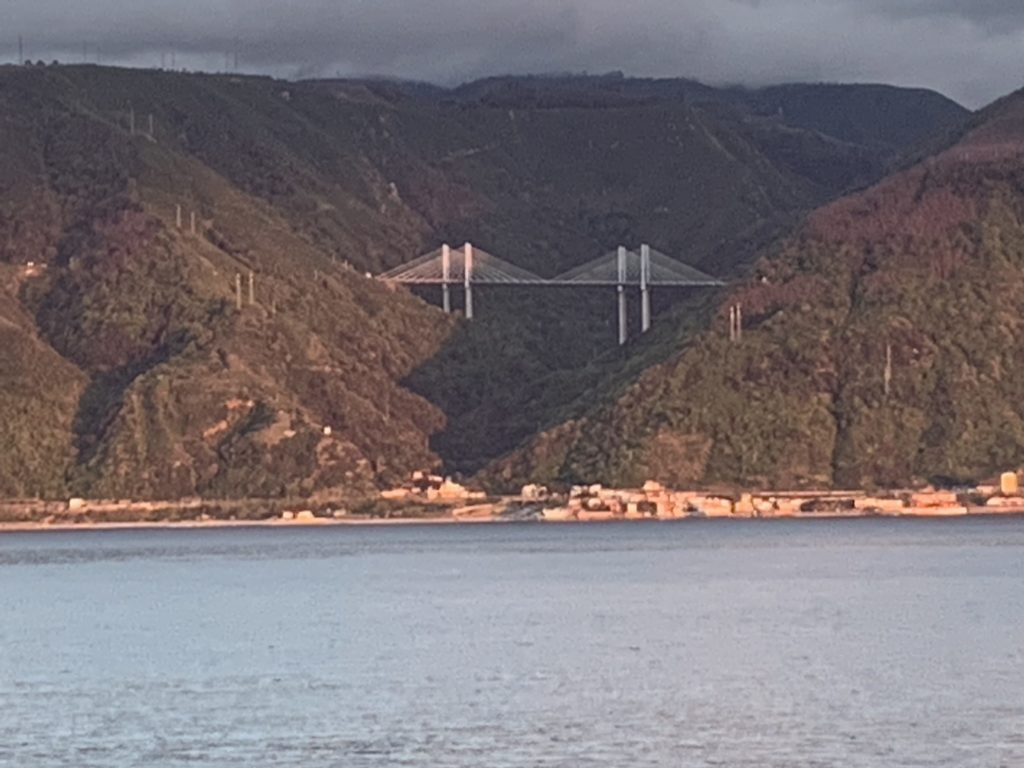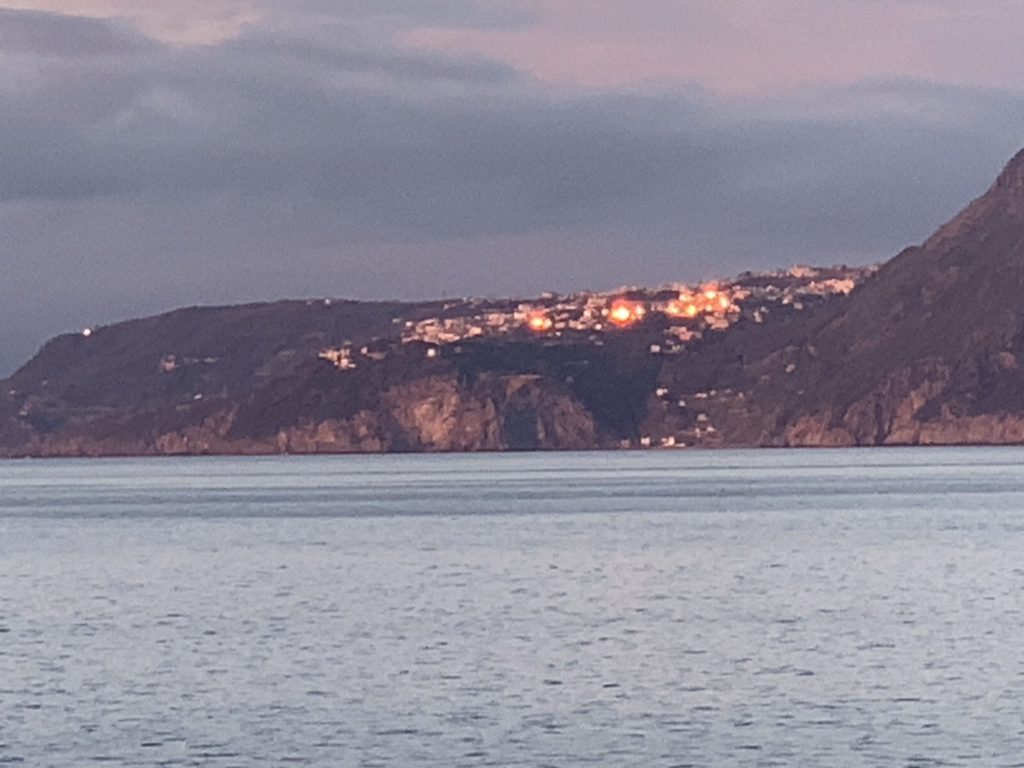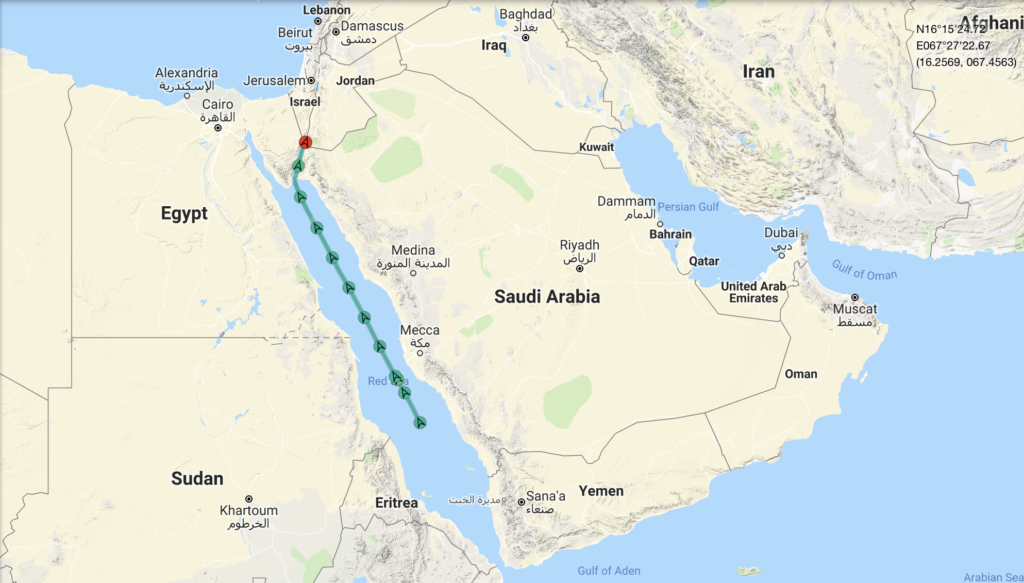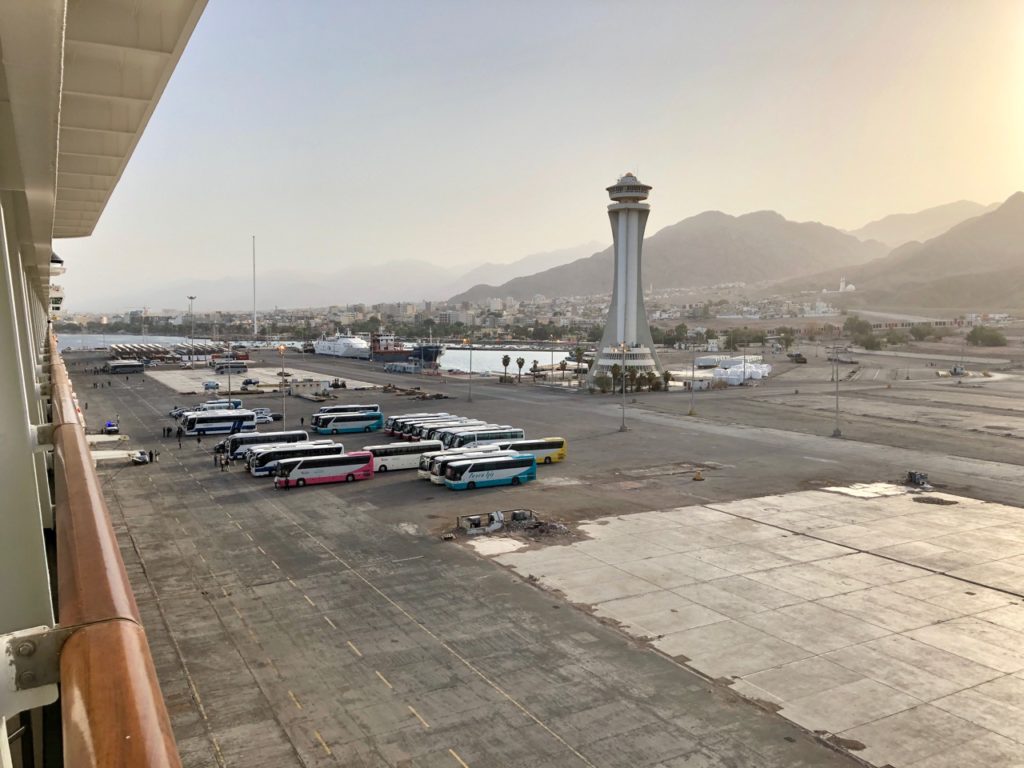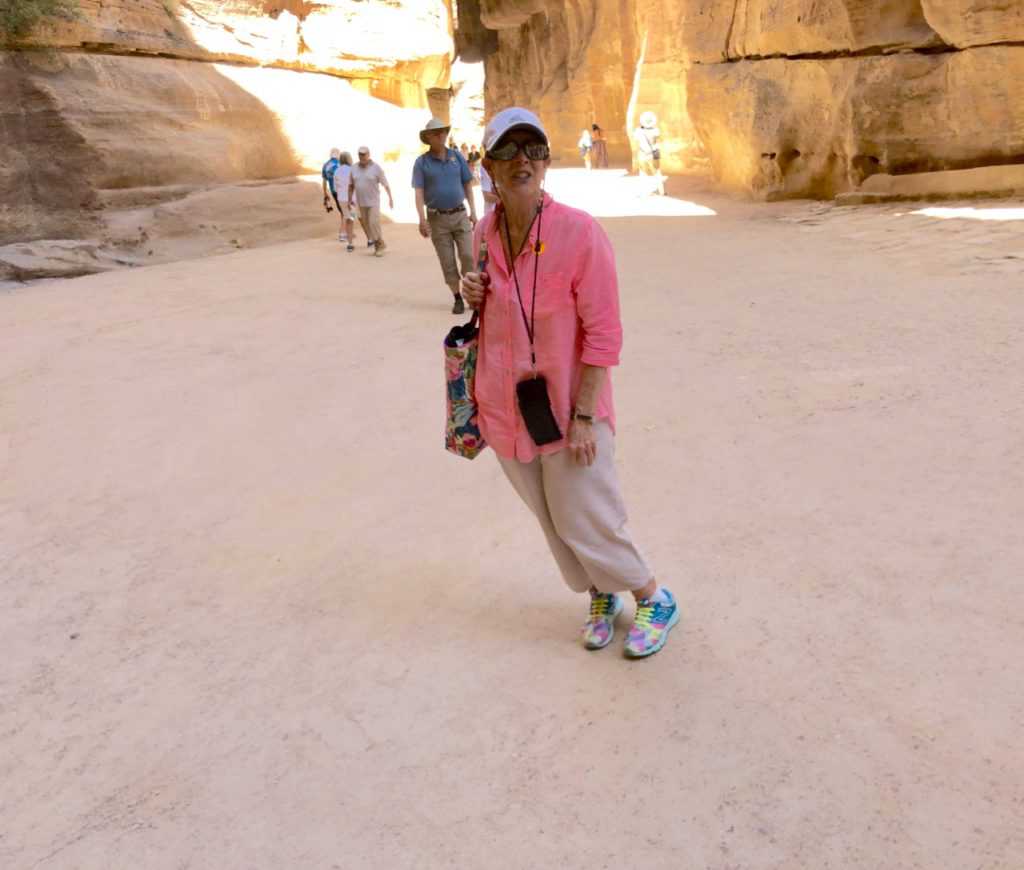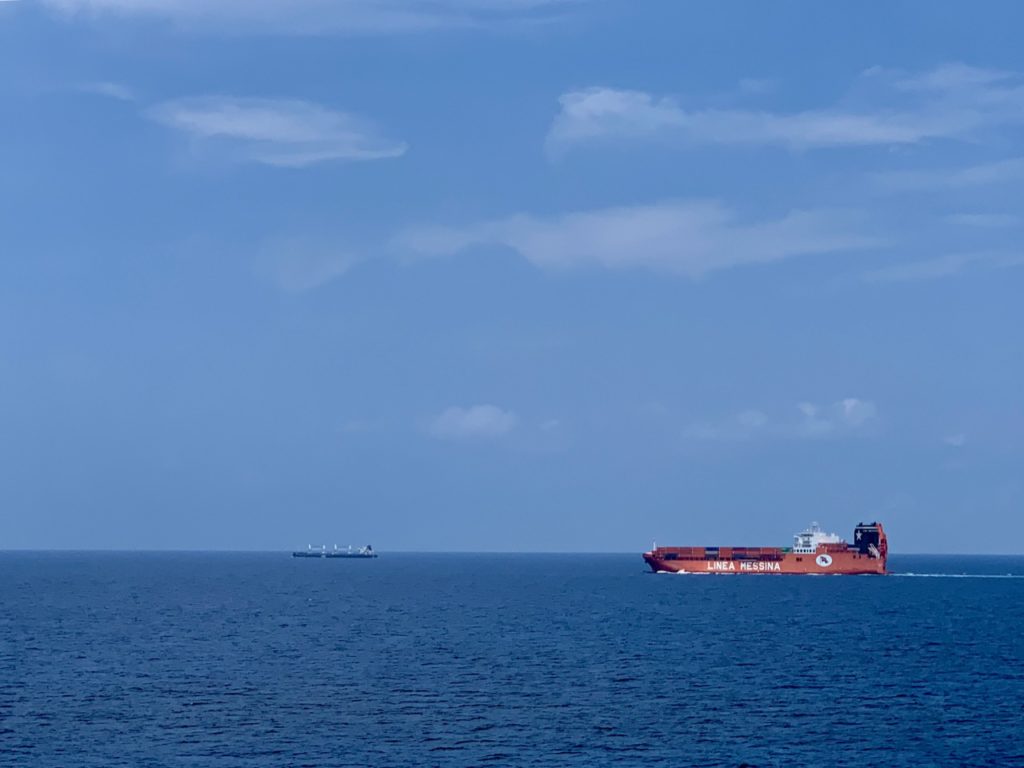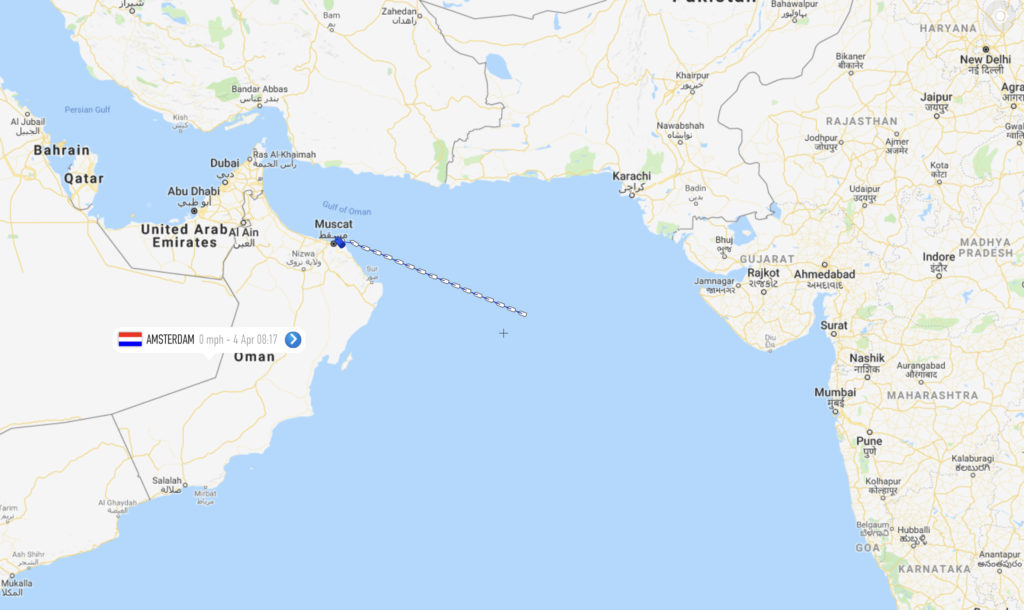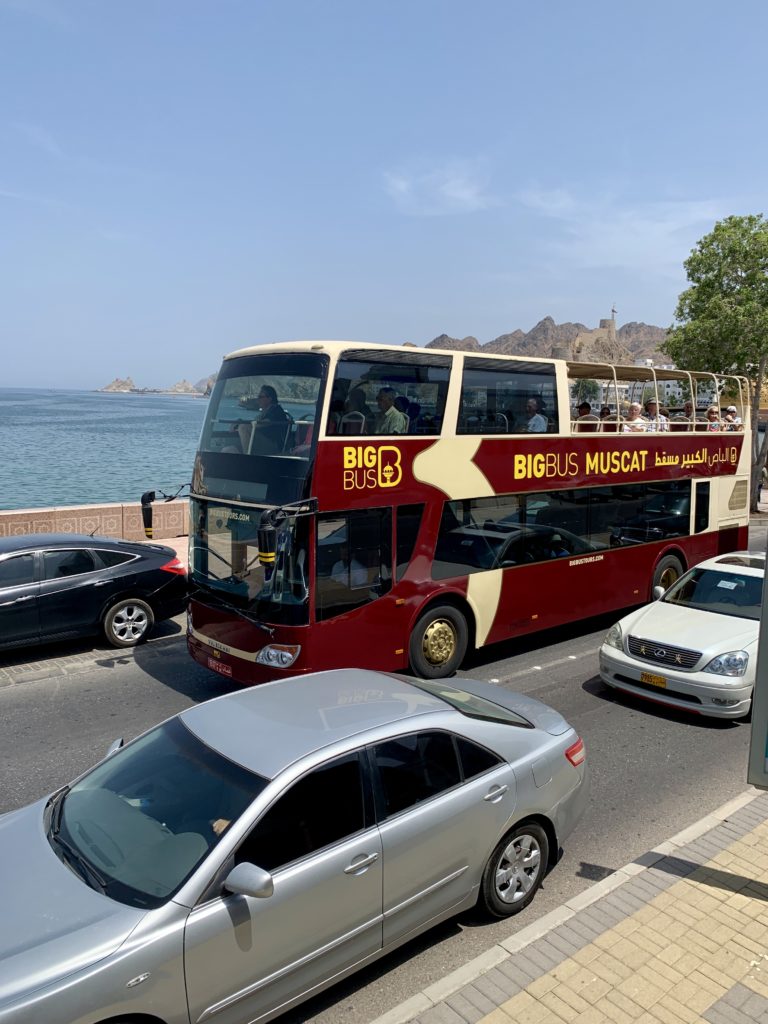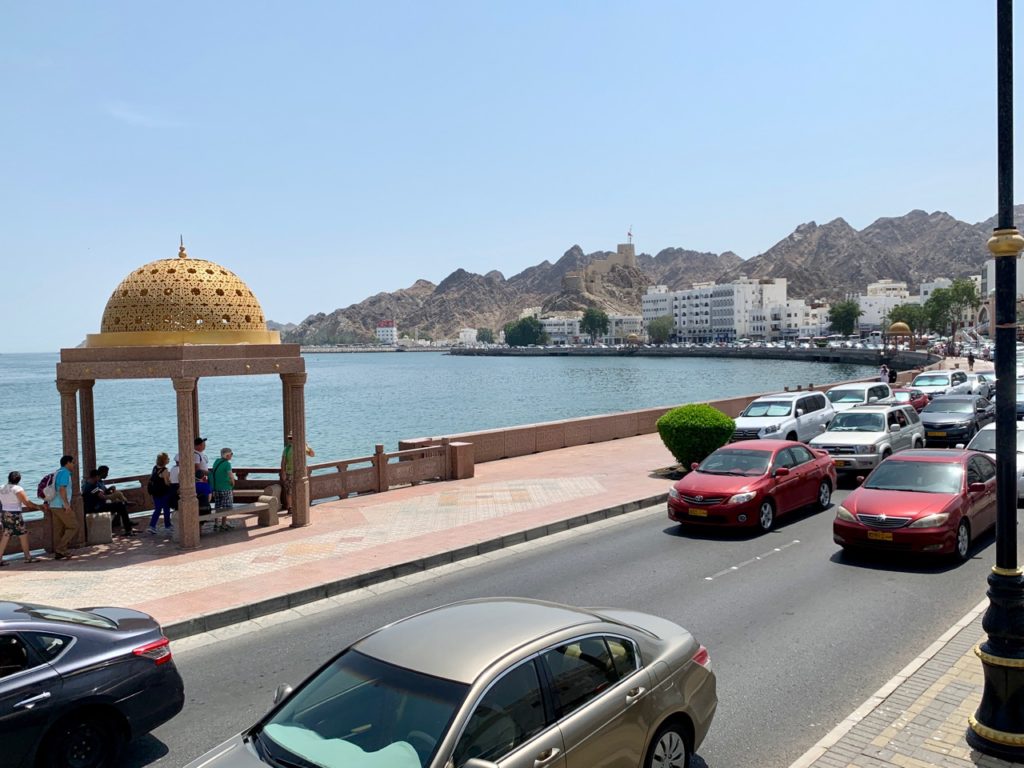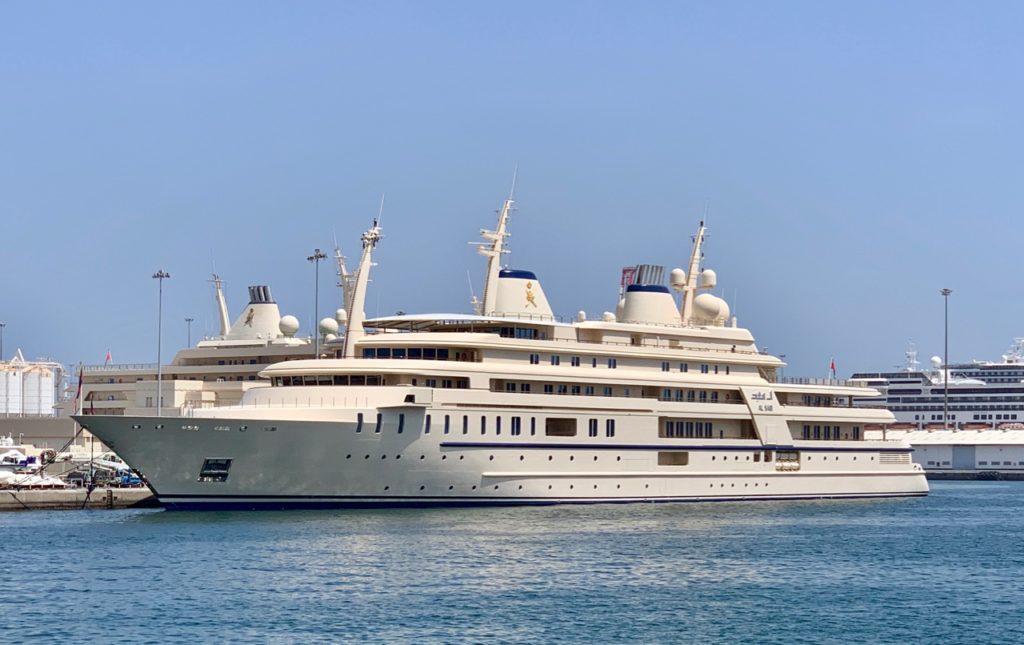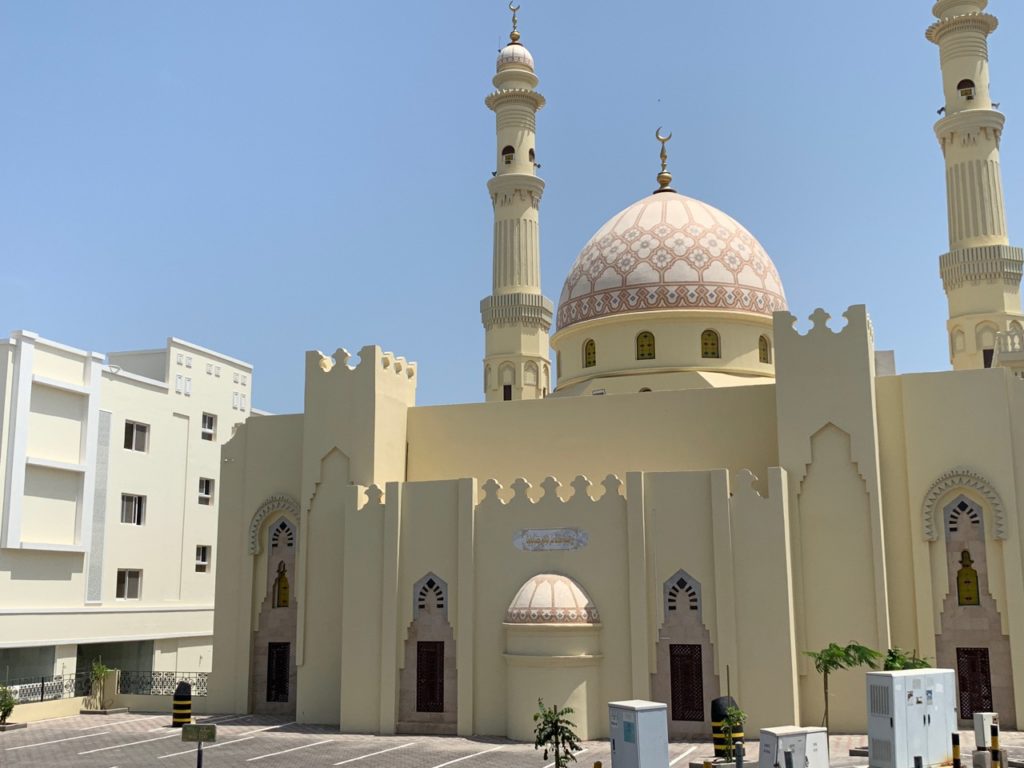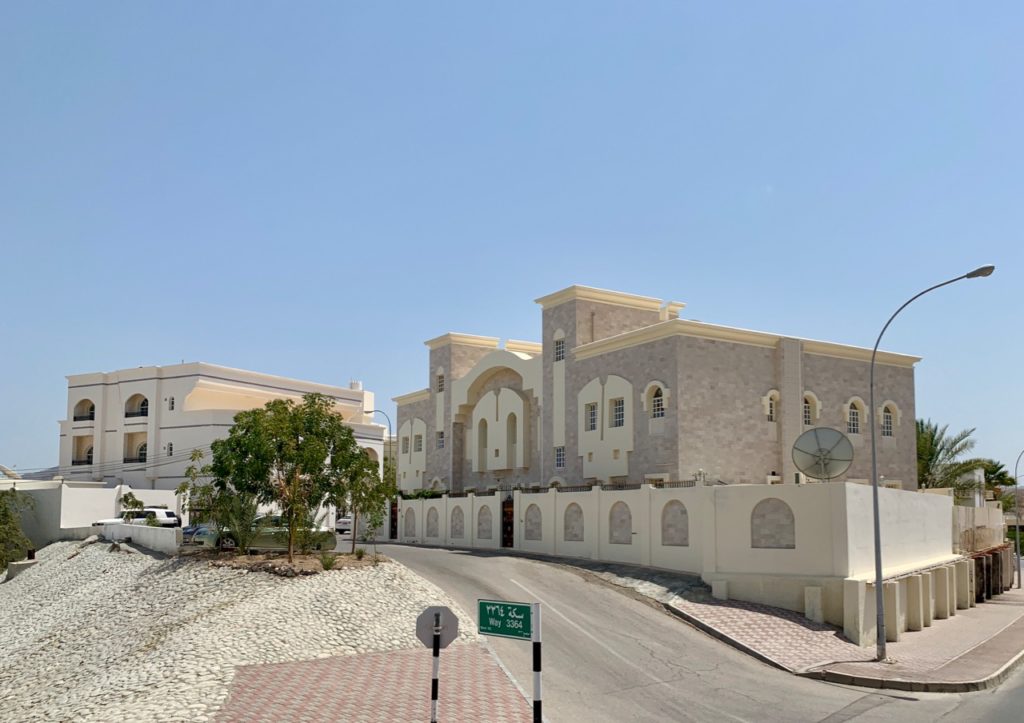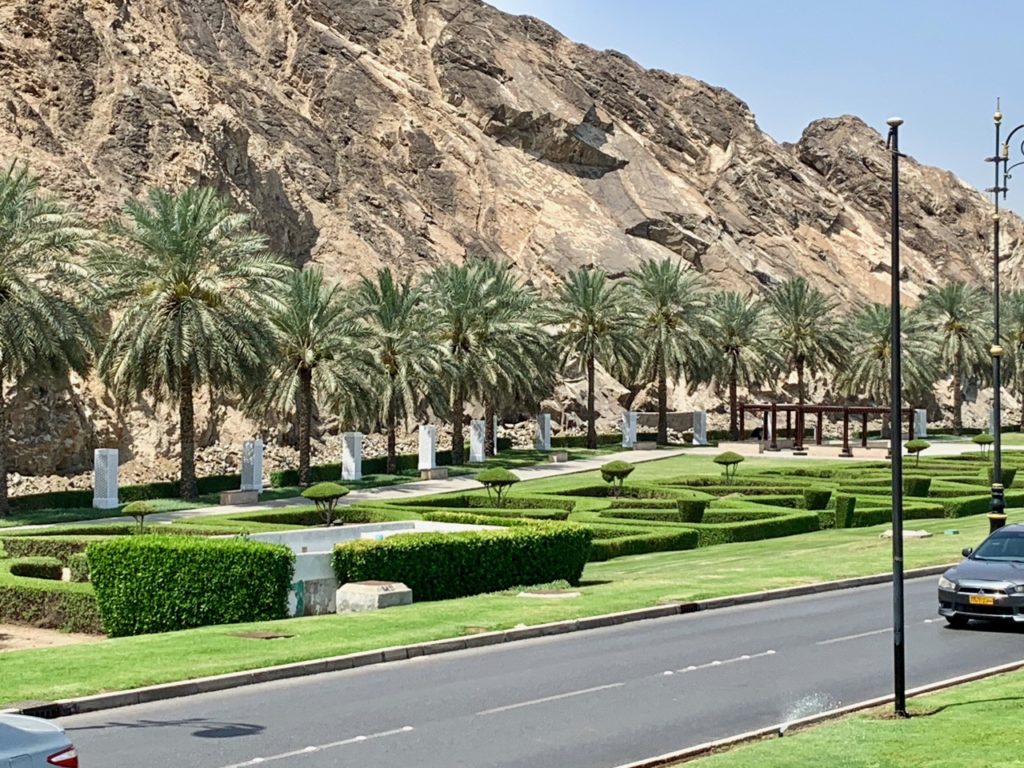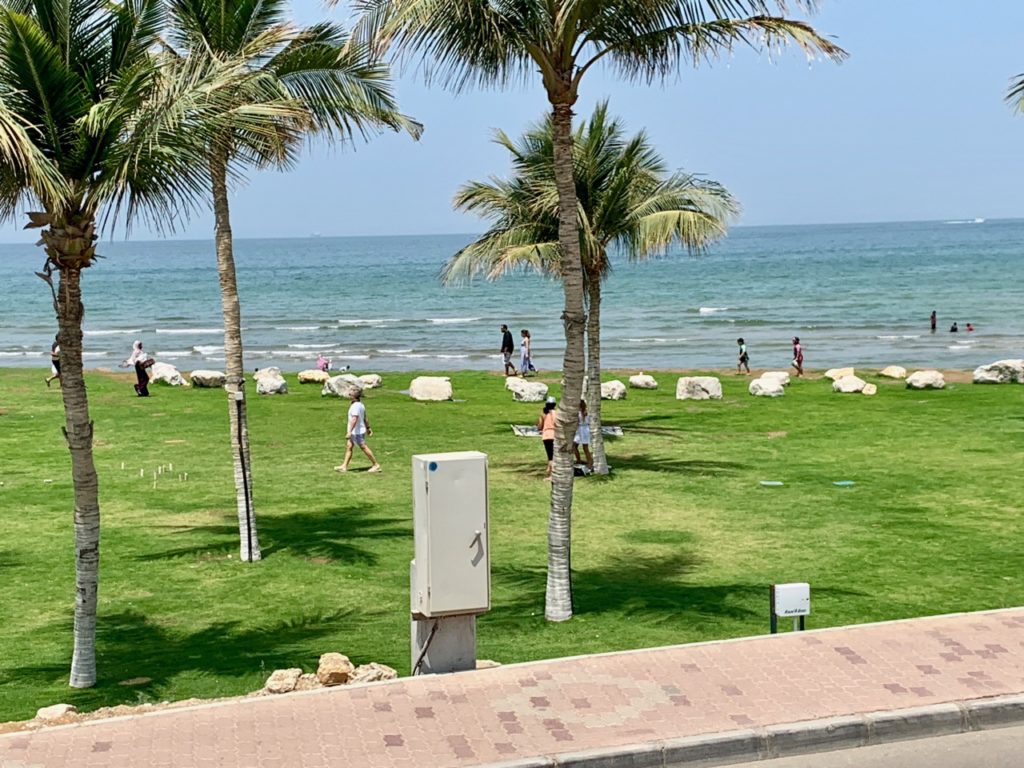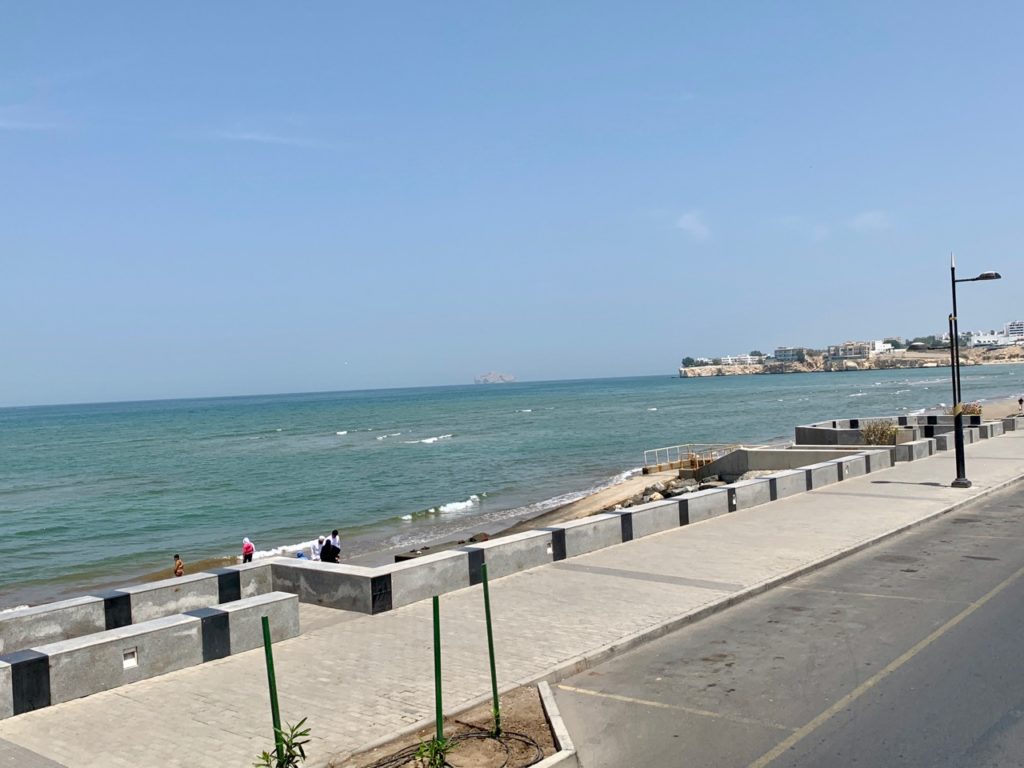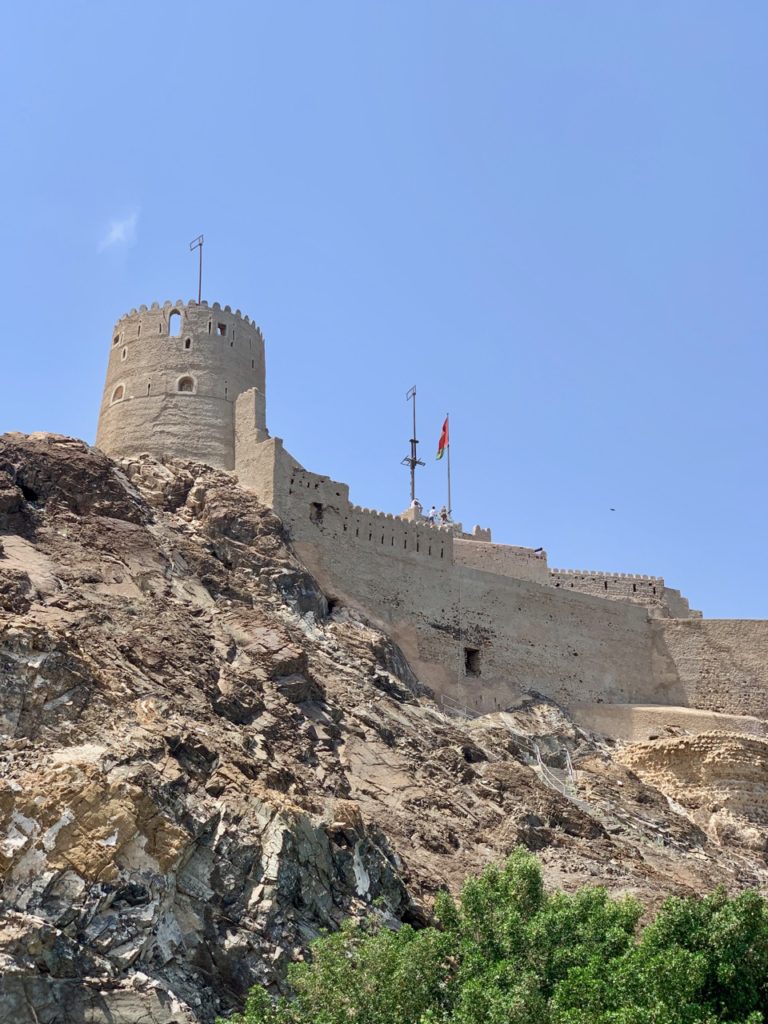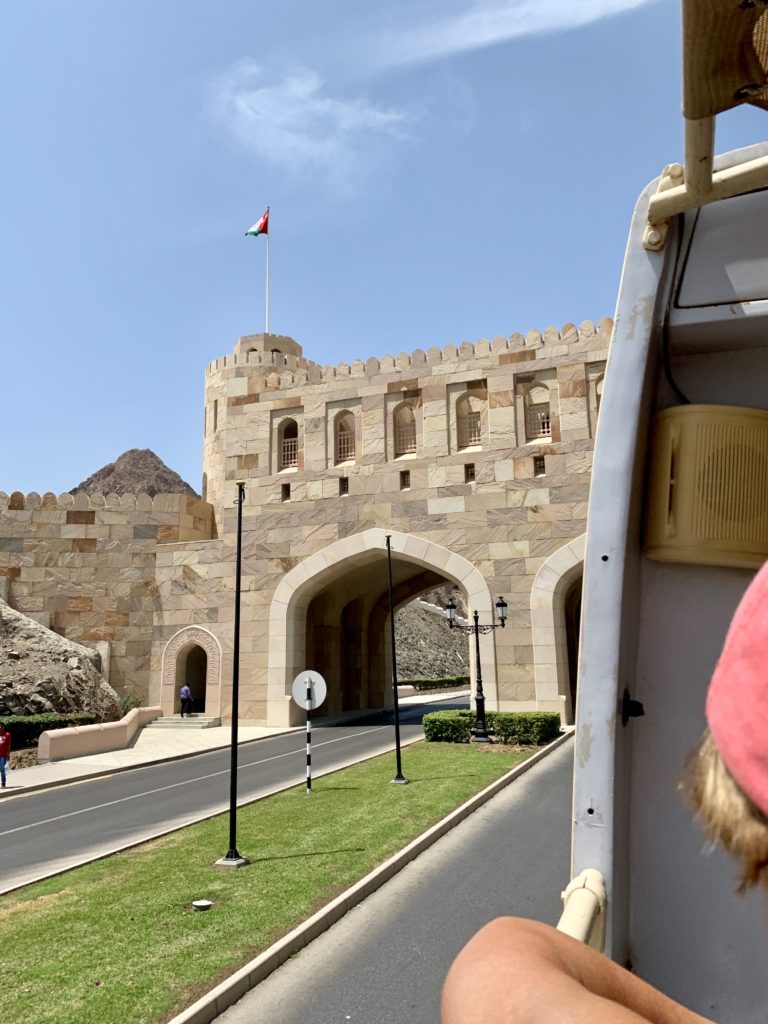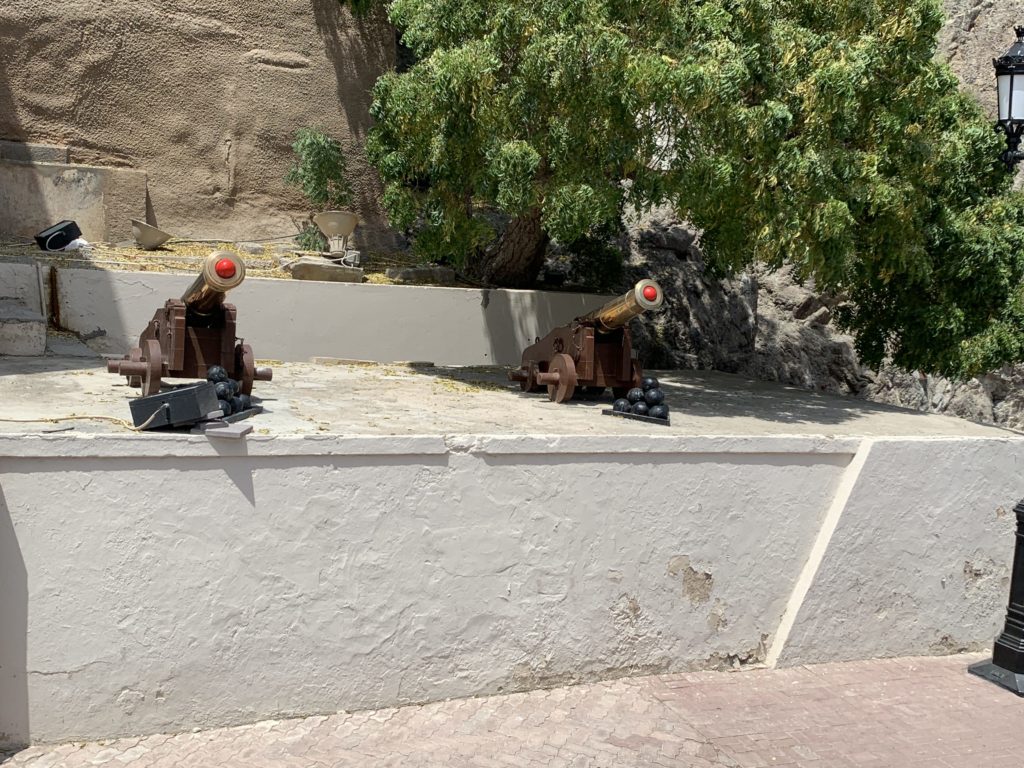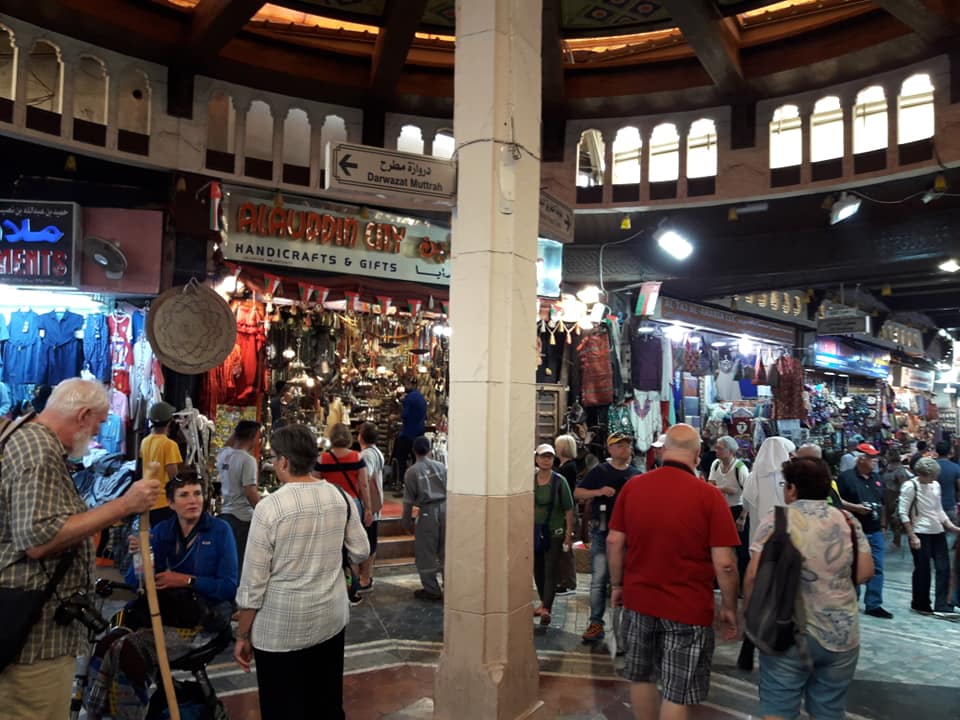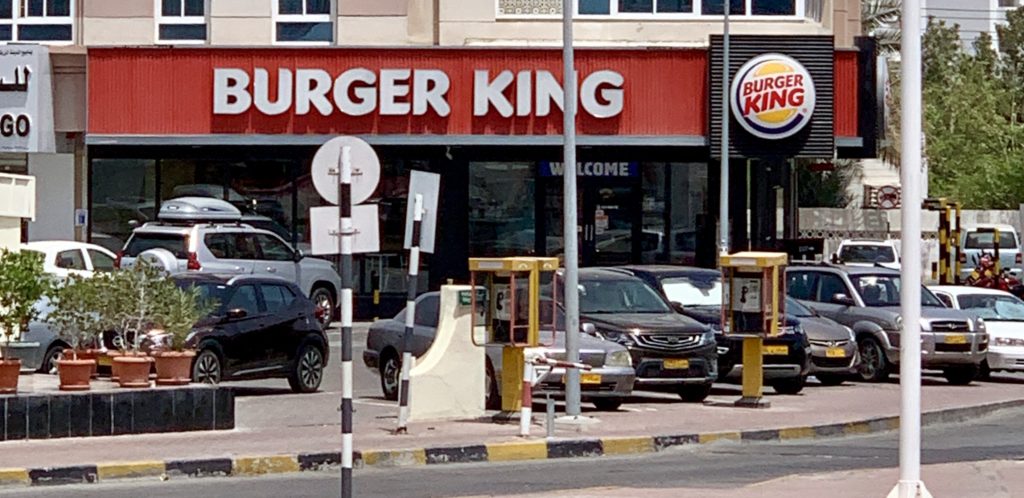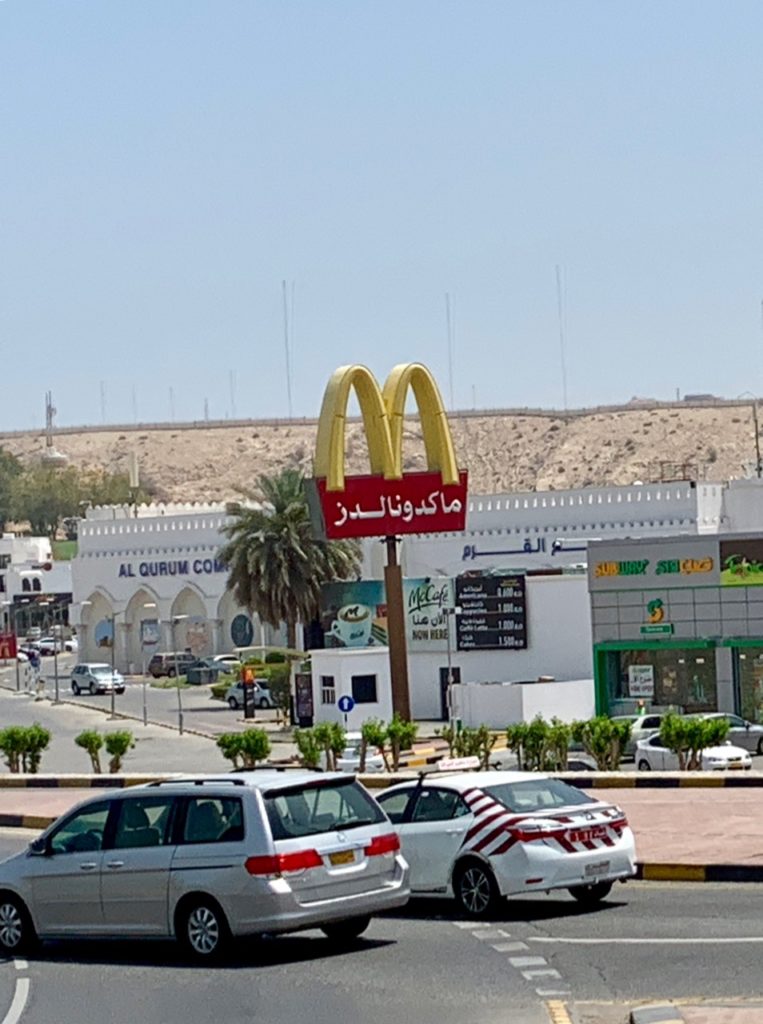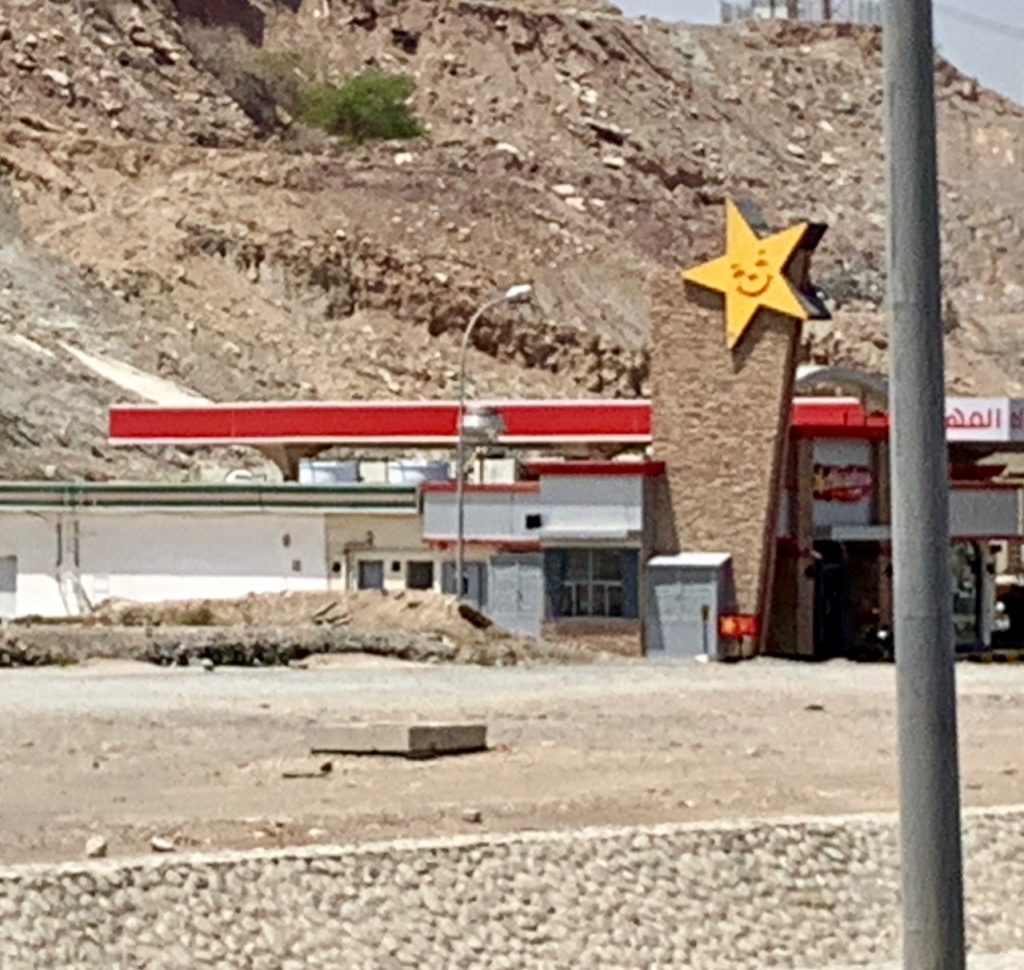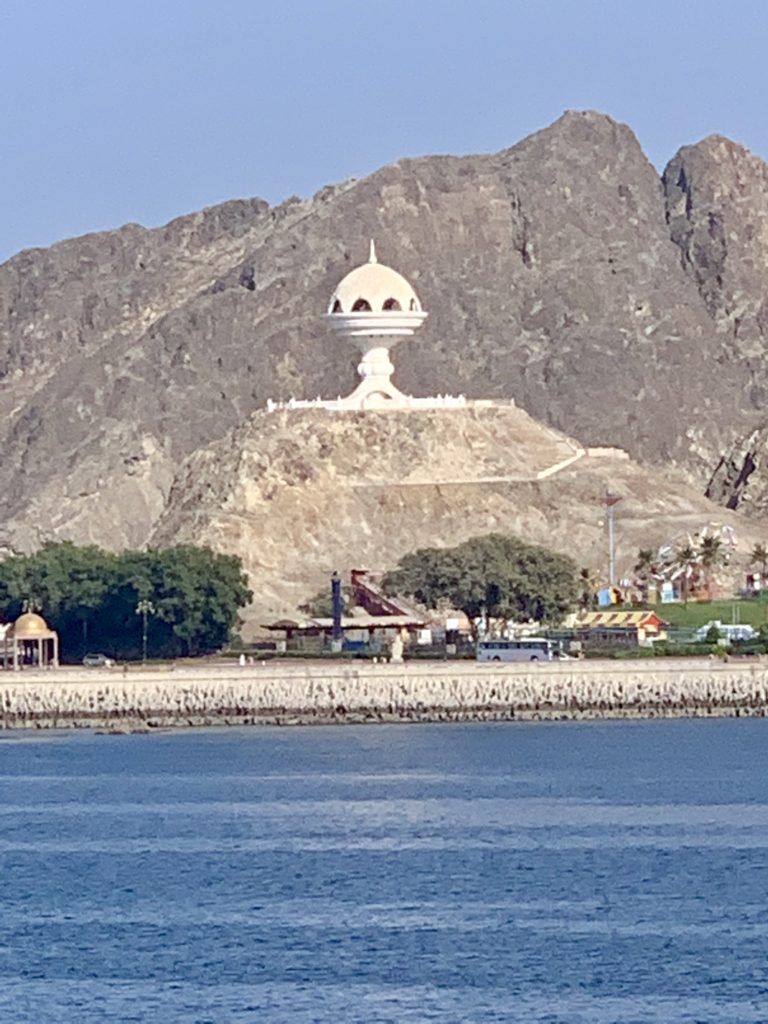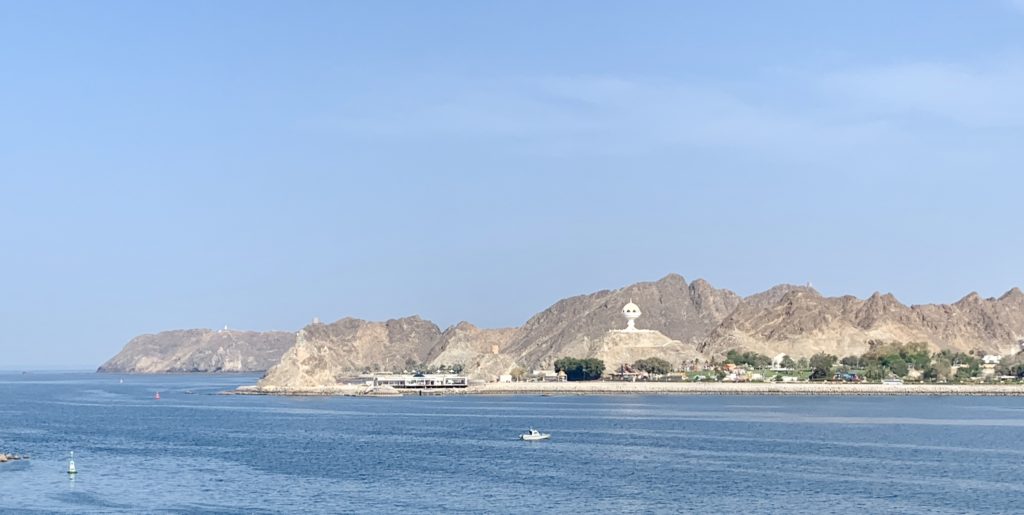Easter Sunday, April 21, 2019
This day started off on a very somber note. Hundreds of people were killed today in Sri Lanka as the result of a terrorist attack aimed against the Christian residents and visitors of Colombo, Negombo, and other towns and cities. Having just recently visited Negombo, I felt particularly affected by the incidents. I’ve seen so many parts of the world on this trip, and as a result, I see that we are all more alike than different. I wish that more people would see their worlds the same way.
Where am I?
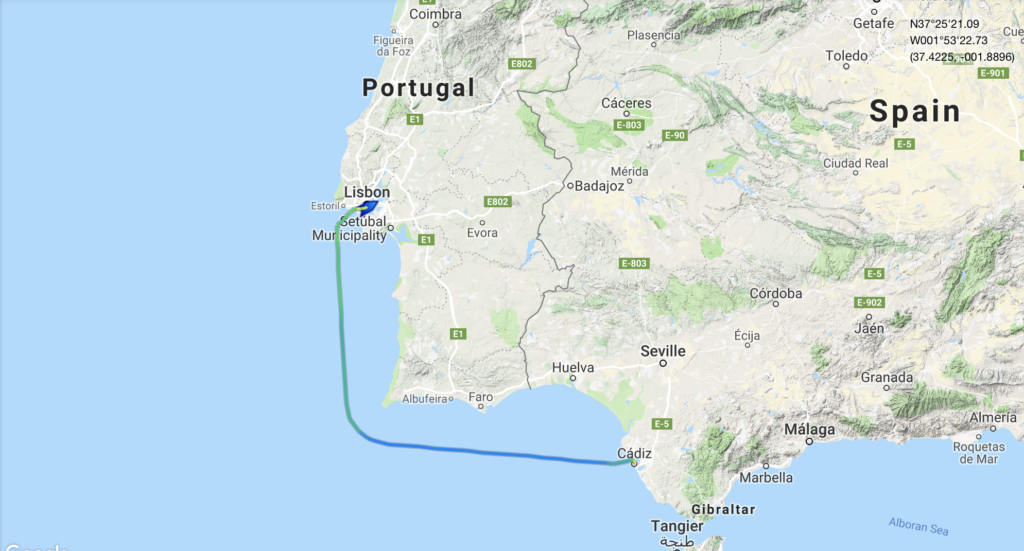
What did I see, first thing this morning?

It’s always fun to wake up in the morning and step outside to see what was not there the night before. This morning, I sailed under the Golden Gate bridge and into the open arms of Christ the Redeemer.
Or, maybe not.
What’s been happening?
Today, I booked another shore excursion. This might sound a little repetitive but the tour is in two parts. The first part is a quick trip around town to see some of the attractions, and the second part is a drive out to the beach for a look around the countryside. Yeah, I know. That’s what I did yesterday, but it sounds like so much fun, huh? I just never really get tired of beaches.
Look at this line up of ships! I expect things are gonna be crowded today!
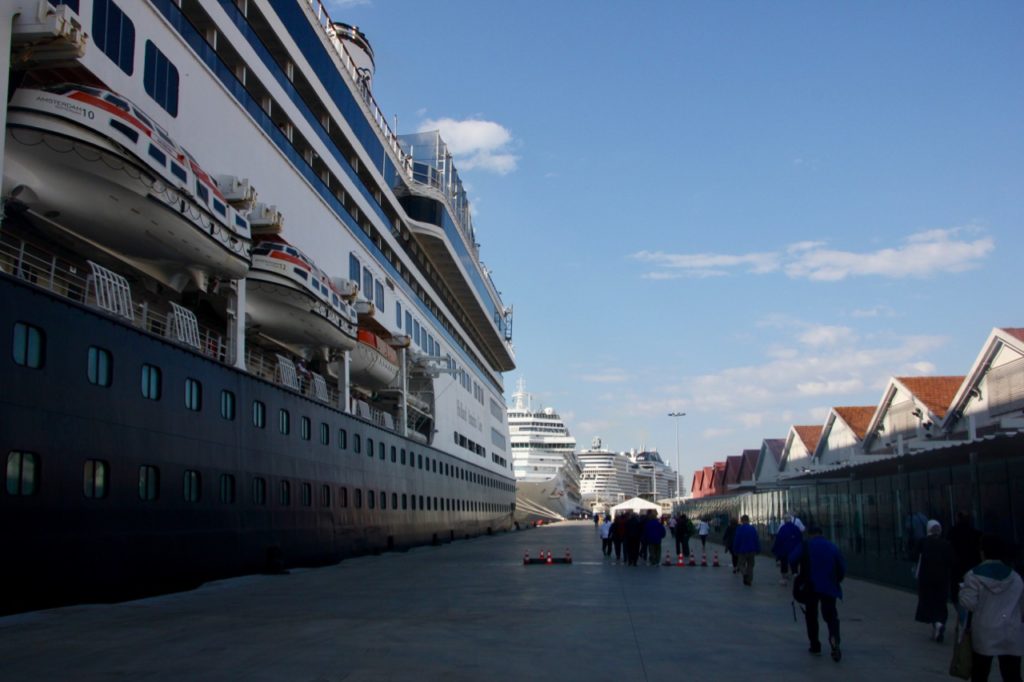
So, I left the ship and marched out to my waiting bus. With everybody on board, the bus pulled out and we started exploring the city of Lisbon. And, what a beautiful city it is!
From my perception as somebody that grew up in the United Sates, the city feels old (just like Cadíz, Barcelona, and Napoli) but it feels younger than those places at the same time. This is entirely possible owing to the major earthquake that Lisbon experienced in 1755. In that temblor, the entire downtown part of the city either collapsed, was washed away in a series of tsunamis, or burned. The area was rebuilt, but as a result, all of the buildings are post-1755 and therefore look “modern.”
Near the Port of Lisbon, there are a number of large plazas that invite people to come and play, shop, dine, or just enjoy the day.
Below are some photos of the plazas we drove by. Take a close look and tell me what you see.
Did you tell me? I couldn’t hear you, so I’ll just tell you.
- All of the plazas make extensive use of tile.
- All of the tiles are black and white
- No two plazas have the same design
In fact, Lisbon is a town full of tiles. Colorful tiles called azulejos adorn many of the houses, especially those that are 100 years old or more. So many styles and so many patterns. If there is a single cultural item that defines the look of Lisbon, it is its array and display of tiles.
The bus then headed for the highlands. We turned onto La Avenida da Libertade which looks like this: a broad street with a beautiful central promenade accented with shade trees. Notice, once again, that the sidewalks are made from black and white tiles in a pattern that is distinct to this avenue.

At the top of the avenue there is a roundabout with a statue of the Marques de Pombal at the center. It is at an intersection of several of the most important roads in Lisbon. This is no accident.

I found this guy’s story to be quite interesting. He was the King’s Prime Minister starting in 1750. Please recall that there was a devastating earthquake in Lisbon in 1755. During that earthquake, King Joseph I narrowly escaped with his life. After that time he refused to be in any building with walls and proceeded to conduct the King’s business from a tent! And he did so until his death. To me, it sounds like the King developed a severe case of PTSD.
So, in the mean time, Sebastião José de Carvalho e Melo, the First Marques de Pombal essentially took over. He was not the King, but many believed he had more power than the King at that time. It’s hard to see it in the photo above, but standing next to the Marques at the top of the statue is a lion, and the lion is a symbol of power. And there you have it!
The Marques de Pompal implemented many social and economic reforms at a time when Portugal needed them most, and for that he is still recognized and remembered.
Anywaty, back to the tour. The roundabout is also at the bottom of one of the major parks in Lisbon, the Parque Eduardo VII.
This park was once called Parque da Libertade (just like the name of the avenue) but when Eduard VII of England visited Lisbon in 1902 on a mission to improve relations with Portugal, the park was renamed in his honor. Here’s an aerial view of this part of the city to help put these pieces (the avenue, the statue, and the park) together.
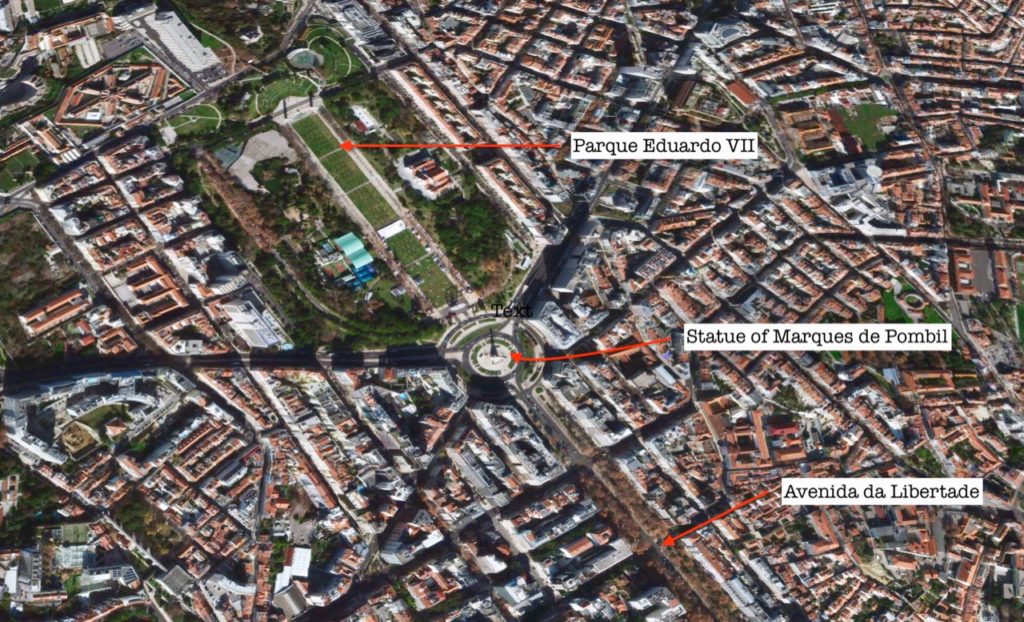
The Parque Eduardo VII was our last stop in the city. After we all snapped our photos of this place we headed out to the beach. Here’s a map of where we went. Look to the west of Lisbon along the southern coast for the little town of Estoril. That’s where we headed.
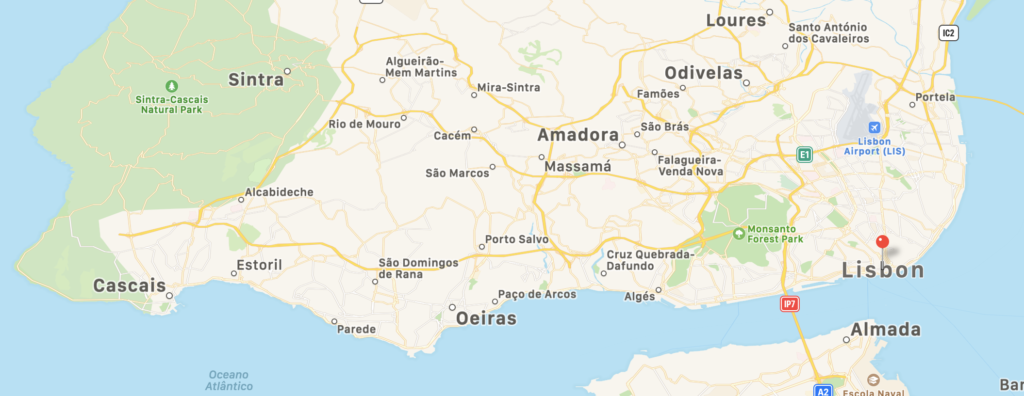
Estoril is a beach resort town with all of the amenities that anybody might want in a resort. Ancient castles, a clean beach, an abundance of restaurants, and a huge casino. Beach fun during the day, followed by James Bond-like nightlife.
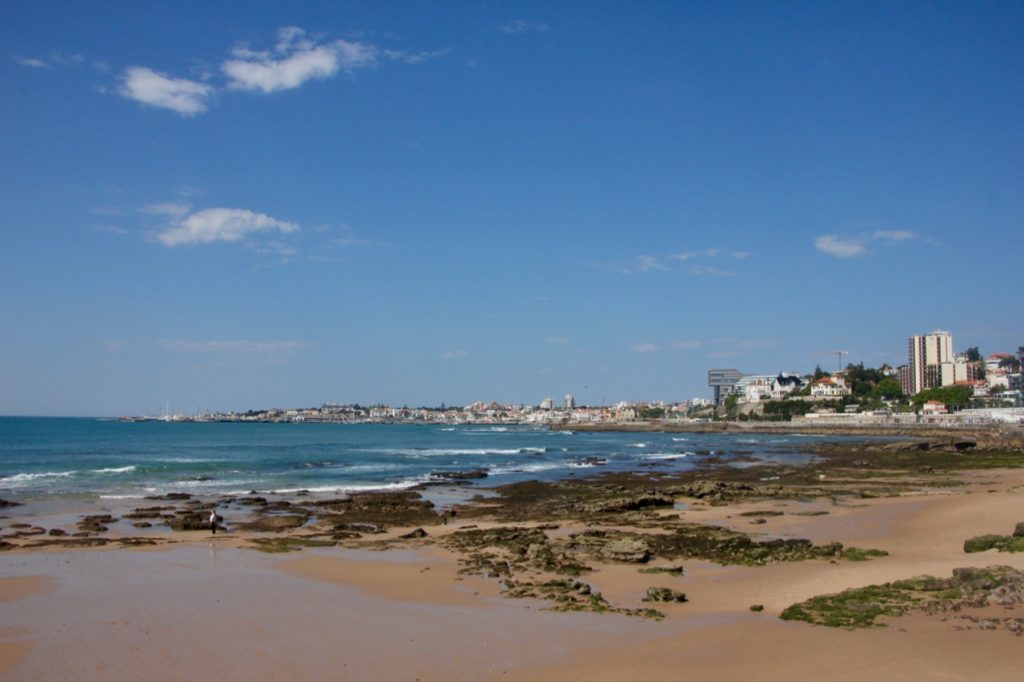
What can I say about Estoril that I haven’t said about so many other beautiful beach towns on this trip? If you like quiet, beach resort towns, you’d love this place. It didn’t have the Grecian island look of Conil (see yesterday’s post) and it didn’t have narrow little cobblestone streets like Conil, but it had its own kind of charm. And, perhaps most importantly, it had a clean and beautiful beach. Here are a few more photos of Estoril. You decide if you’d like to hang out for a while and have a beer with me.
On the ride back to the ship we stayed along the coastal road and I’m glad that we did. On this entire trip I have not seen anything nearly so reminiscent of driving along the coast highway through North San Diego County. This ride brought back memories of Leucadia, Carlsbad, and Del Mar, except add in some forts and castles that California does not have. For me, it was breathtaking!
Just outside of Lisbon, we stopped at a park for a rest break and for photos. The area is call Belém (in English, Bethlehem) where these is a big park and the Torre de Belém (Bethlehem Tower) is a big attraction for local and tourists alike. This ancient tower stands in the river (this is just where the Tagus River meets the Atlantic Ocean) on a rocky point. It was originally created to stand guard against pirates!
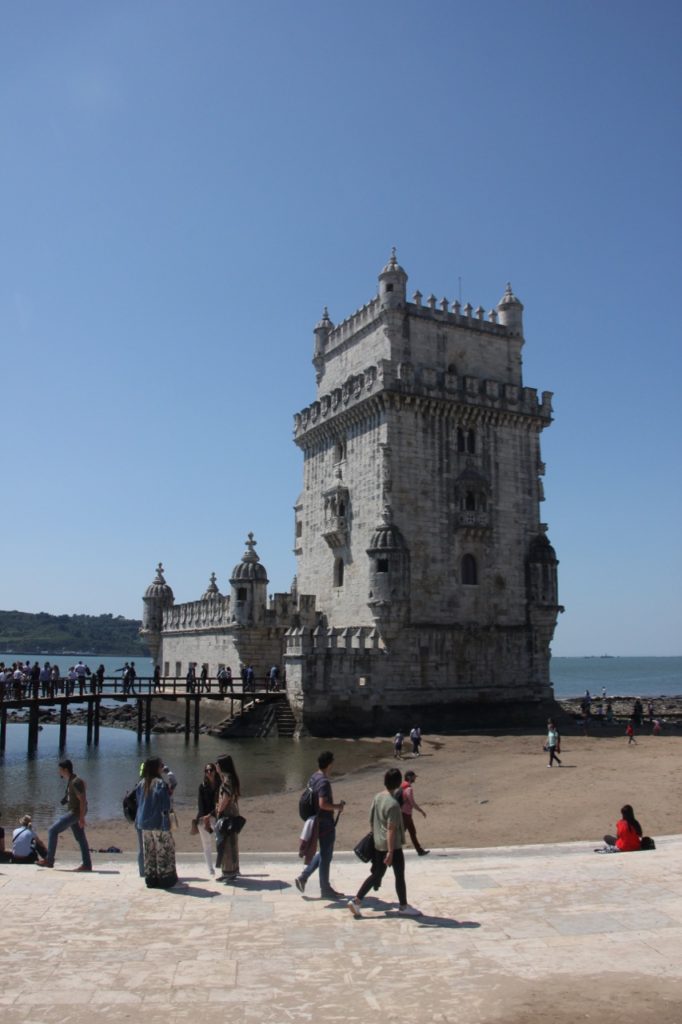
And, the Torre de Belém was not the only attraction to be seen here. Looking down the Tagus River one can clearly see the Golden Gate Bridge.

Now, you know that we’re in Lisbon, so this can’t be San Francisco’s historic Golden Gate bridge. And it isn’t. But, it is styled after that famous northern California bridge. And, here’s another Bay Area connection: it was constructed in 1966 by the same company that built the Oakland-Bay Bridge that connects Oakland, California with San Francisco! I’m starting to feel more at home all the time!
So, with an ancient fort to one side of me and the Golden Gate Bridge’s doppelgänger on the other side, I would love nothing more than to sit on a bench with a nice glass of wine and (literally) drink it all in.
And, hey! What’s that?
Why, it’s Wine with a View, the traveling, portable wine bar! How very convenient!
There is so much to see in this huge park. After one finishes a glass of wine or two, what’s a good way to get around town to see the other sights? Well, here’s one way:

Yes, it’s BIRD electric scooters. (And, several other brands, too.) The scourge of cities everywhere can also be found right here in Lisbon. And so, there you have it. Everything from modern electric scooters, to wine-on-the-run to ancient fortresses, Lisbon has it all. Don’t forget the California weather, either!
Anyway, we were out of time and had to get back to the Amsterdam. So, is Lisbon on my “I’d do it again” list? You’re damn straight it is!
So, anything else?
Well, maybe just one more little thing.
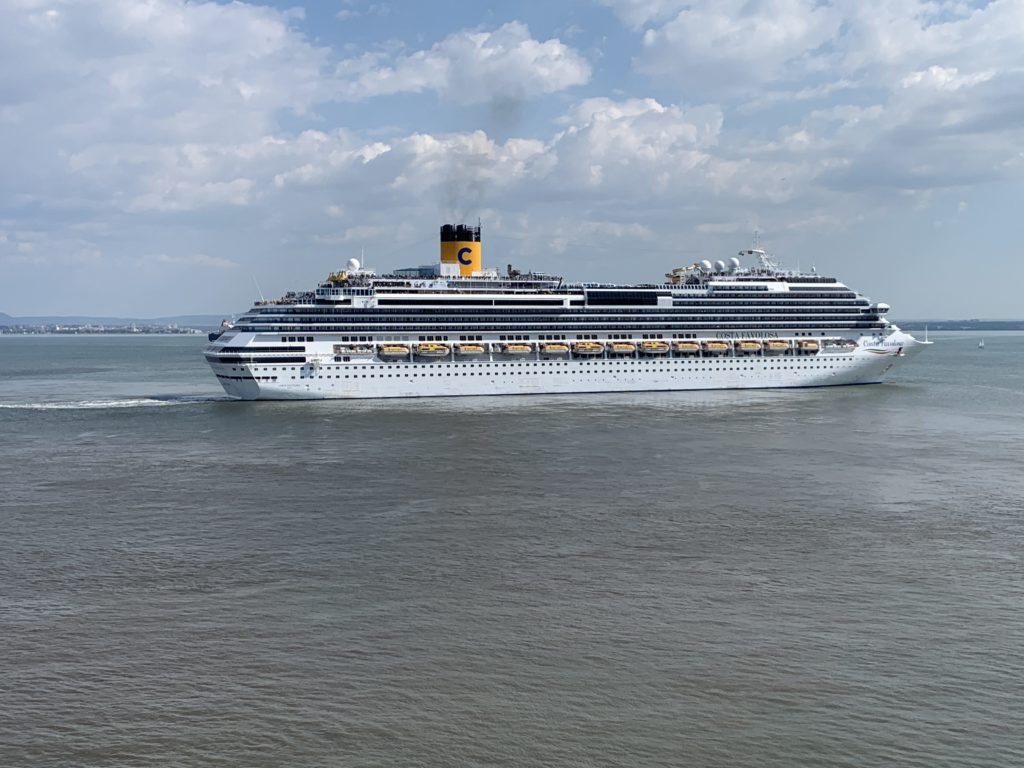
One of my favorite things to do after a shore excursion is to come back to the ship, head to the Sea View Bar at the back of the ship, open a beer or pour a glass of wine, and watch another ship sail away into the sunset. Here, a Costa Lines ship makes its afternoon exodus from Lisbon. I wonder where they’re going next? Will their adventures be as spectacular as my own?
I hope so. Cheers!
So, what’s coming up?
Yesterday was Cadíz. Today was Lisbon. Shall we make it three in a row?
Ok. Tomorrow is Porto, Portugal!




